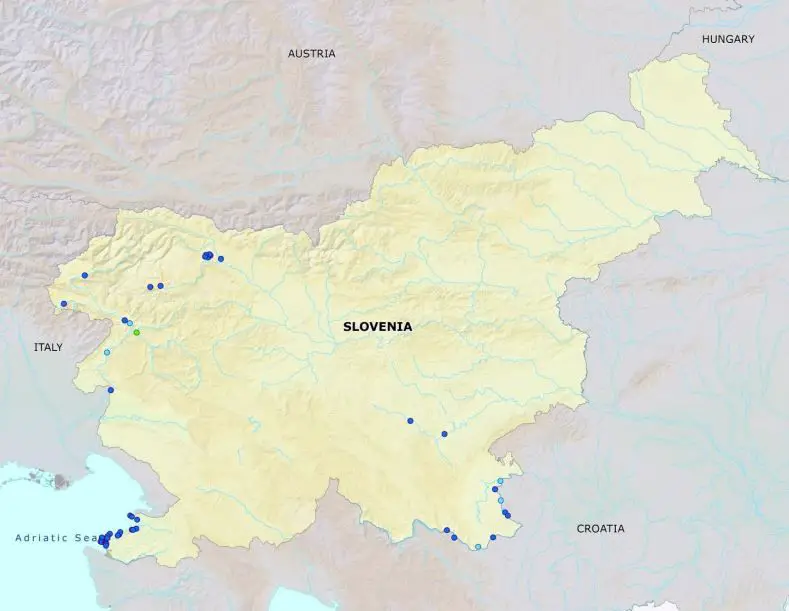Travel
Maribor’s Festival Lent is one of the largest and oldest open-air festivals in Europe, and it returns to Slovenia’s second city for the 26th time this week bringing, music, art, culture, creativity, food and laughter to the medieval Lent district, the historic squares and streets of the Old Town, the city park and even on the floating main stage on the River Drava.
Note - all videos are from 2018
For ten days, from 20 to 29 June, visitors can enjoy a wealth of entertainment that resists easy summary, with live music from all genres, theatrical performances for young and old, DJ sets, a chess festival, sporting events, art exhibitions and workshops, a culinary programme, films, dance and much, much more, drawing performers and audiences from all over the world.
The full schedule can be seen here and is worth clicking around, as along with further details of each of the hundreds of participants you’ll find videos showing what to expect. You can also follow the programme on Facebook, while the organisers’ have selected their own highlights here if you’d like some more guidance.
In short, Festival Lent is one of the true highlights of the summer – and the year – in the Slovenian cultural calendar, with something for everyone on every day, making the 20 to 29 June (2019) the ideal time to visit Maribor.
June 17, 2019
Heavy traffic has become a problem at one of the main tourist destinations in Slovenia, Bled, which is why last year public transport was introduced into the area, connecting the village of Bled with Vintgar and Pokljuka.
Related: How to Spend Four to 48 hours in Bled
Due to last year’s great success, an additional line has been introduced. Thus, between June 15 and September 15 (2019), green and blue lines will be in service for locals and tourists alike. A ticket costs one euro, and the ride is free for guests staying at Bled for at least three days and having a Julian Alps card for Bled.
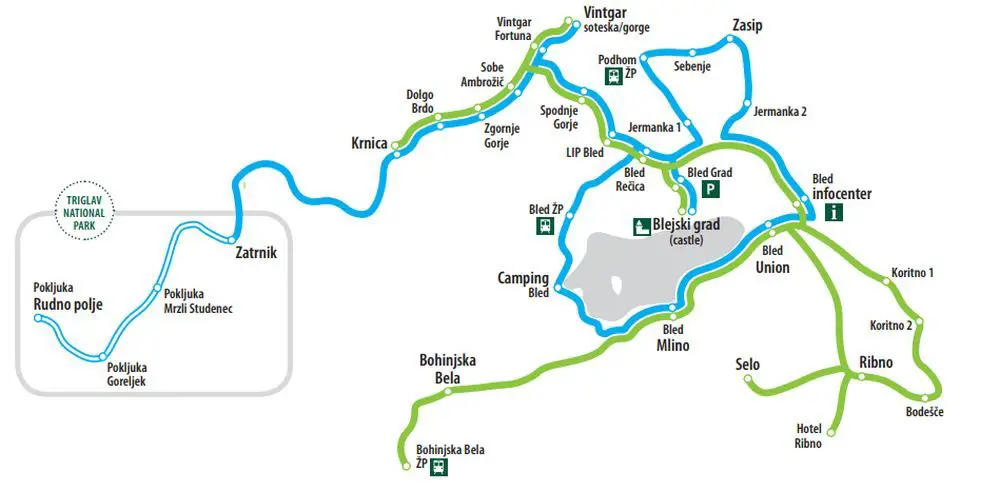
For details on the timetable and routes, please click here or here.
STA, 14 June 2019 - Infrastructure Minister Alenka Bratušek said on Friday she was working on the idea to connect Maribor and Ljubljana with express trains, a demand presented by a civil initiative earlier this week. Bratušek said she would push for connecting several European cities with fast trains to be one of Slovenia's priorities during the EU presidency.
"I believe Slovenia should be the initiator of express trains between Vienna, Ljubljana and Venice, and the first fast connection we need to introduce would be between Ljubljana and Maribor, two biggest Slovenian cities," the minister said.
The Infrastructure Ministry said it was working on a transport policy that is in line with the demands of the group of academics commuting from Maribor to Ljubljana on a daily basis who started the campaign for better transport connection between the two cities on Monday.
The initiative would like to cut the commuting time between the two cities to 50 minutes, while the train ride currently takes from two to three hours.
The head of the initiative, Mateja Ratej, noted that the Maribor-Ljubljana motorway, being a part of the transport corridor between eastern and western Europe, was heavily burdened, especially during holidays and in the summer.
"Traffic accidents are becoming increasingly frequent, causing tailbacks of several kilometres, which extend the 133-kilometre journey to several hours," she said.
The ministry said today it had already introduced a single integrated pass for public transport and additional fast routes. "We are modernising the existing and building new railway connections to have more cargo transported on rail and make the connections between cities faster, more cost-efficient, and more environment- and user-friendly."
According to the ministry, a task force will be set up to look into the possibilities for express trains between Ljubljana and Maribor and other cities, and estimate the costs of such a project.
The 50 Minutes Between Maribor and Ljubljana initiative was backed by the Maribor municipality and the List of Cyclists and Pedestrians.
"The situation has been causing discontent for a while and things get much worse in the summer months," Ratej said, calling for an action plan before the end of the year.
The initiative is now collecting signatures for its petition.
All our stories on railways in Slovenia are here
June 14, 2019
Late snowfalls have delayed the mountaineering season in Slovenia’s high mountains this year, which usually begins mid-June. Anyone headed to high mountains at the moment is advised to bring appropriate winter equipment, or turn around and head down if stumbling upon an icy white surface below a mountain peak.
Accordingly, not all mountain huts have opened their doors to climbers yet. For the current situation on mountain huts please follow this website: https://plangis.pzs.si/?koce=1
Although we seem to be still far from the beginning of the season, the mountain rescue service already intervened 201 times this year and 17 people lost their lives. (source)
Finally, hikers are advised not to greet any helicopters they see by waving to it unless in need of help.
Related: June 16 in Slovenian History: Mountain Rescue Service Established
STA, 13 June 2019 - As the number of tourists visiting Slovenia with camper vans grows, so is the number of places where they can stop for rest. Since a project encouraging municipalities to provide rest stops was launched in 2014, their number has risen to 160 rest stops.
As part of the Network of Rest Stops for Camper Vans, a project launched by the the Mirna municipality in the south-east, 90 of Slovenia's 212 municipalities have various types of rest stops, ranging from places offering only water and electricity to full-fledged camping sites.
The idea is to get all Slovenian municipalities on board to construct another 40 new rest stops to get to 200, project coordinator Petra Krnc Laznik told the STA on Thursday, as representatives of the participating municipalities met in Mirna.
Where to park a motorhome in Slovenia
The local communities which have already provided some infrastructure for camper vans should now more actively attract guests and adjust their offerings to camper van tourists. "They should try to keep them in their area, offering them unique adventures and memorable moments," she said.
"There are 212 municipalities in Slovenia and each of them could have at least one place where camper vans are welcome and where tourists can experience something nice," said project manager Dušan Skerbiš, the mayor of Mirna. In this way Slovenia would get "212 interesting tourist destinations".
Krnc Laznik added that Slovenia was becoming increasingly popular among foreign camper van tourists who also seemed to be very happy with the rest places here.
The map of rest stops, and more details about them, can be found here
STA, 11 June 2019 - The annual international music festivals Imago Sloveniae and the Summer in Old Ljubljana will kick off Tuesday evening with a concert celebrating the 15th anniversary of the Ljubljana-based Forum of Slavic Cultures, which connects Slavic nations in culture, arts, education and science.
Under the title Slavic Rhapsody, the concert will present Slavic folk music and its echoes in music by featuring segments of operas, symphonic and choir music by composers such as Antonin Dvorak, Bedrich Smetana, Marjan Kozina, Stevan Mokranjac, Jakov Gotovac and Alexander Porfiryevich Borodin.
Music will be performed by the Symphonic Orchestra of the SNG Maribor theatre, the choirs of the Serbian and Croatian public broadcasters. Soprano Alina Yarovaya, tenor Aljaž Farasin and violinist Nikola Pajanović will perform solos.
The pieces played at the concert reflect a unique duality, originating in folklore but at the same time being far removed from its origins by way of composers' upgrading of the music. It shows how regional folklore is transformed into music representing a nation, Imago Sloveniae has said.
It is no coincidence that a lot of the music featured stems from Romanticism, the time when many nations started developing their national identities and striving for independence, the organisers also said.
The concert will take place in Congress Square, but in case of rain, it will be performed in the nearby Slovenian Philharmonic Hall.
The programme for both festivals is here, while if you want to see what else is on in town this week check out what’s on in Ljubljana…
June 11, 2019
Secession was a new general style that emerged in various but not all places of Europe at the start of the 20th century, following the developments in transportation and telecommunications, mass production, and expansion of the new class of wealthy. The bourgeoisie, while imitating aristocracy in its propensity to decorum, set to break up with traditional styles and historic imitations, which brought not only to variations in how this style was expressed in different cities, but also in what it was called (Secession, Art Nouveau, Jugendstil, Glasgow School, etc.)
Related: Slovenia by the Book: Let’s See the City - Ljubljana: Architectural Walks & Tours - A great book, written by two architects, that acts as your guide to the city
Secession arrived in Ljubljana about a decade after it emerged in the Art Nouveau centres of Europe. Most of Secessionist buildings were completed in the first decade of the 20th century, the majority of which can be found between the old city centre and the railway station, that is along Miklošičeva Street and around Miklošič Park. This part of the city is also known as Secessionist Ljubljana.
For visitors to Ljubljana who would like to take some pictures of this short-lived but beautiful architectural style we have listed some of the most representative examples below.
- Dragon Bridge, 1901, architect: Jurij Zaninović
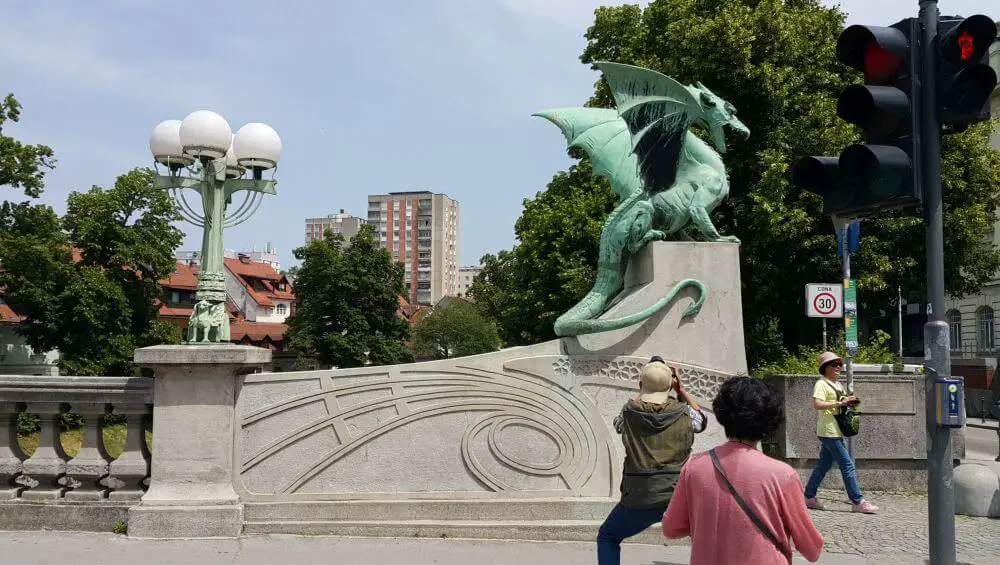
- Public Baths (now City Playground), 1901, architectural studio Wilhelm Brückner & Co
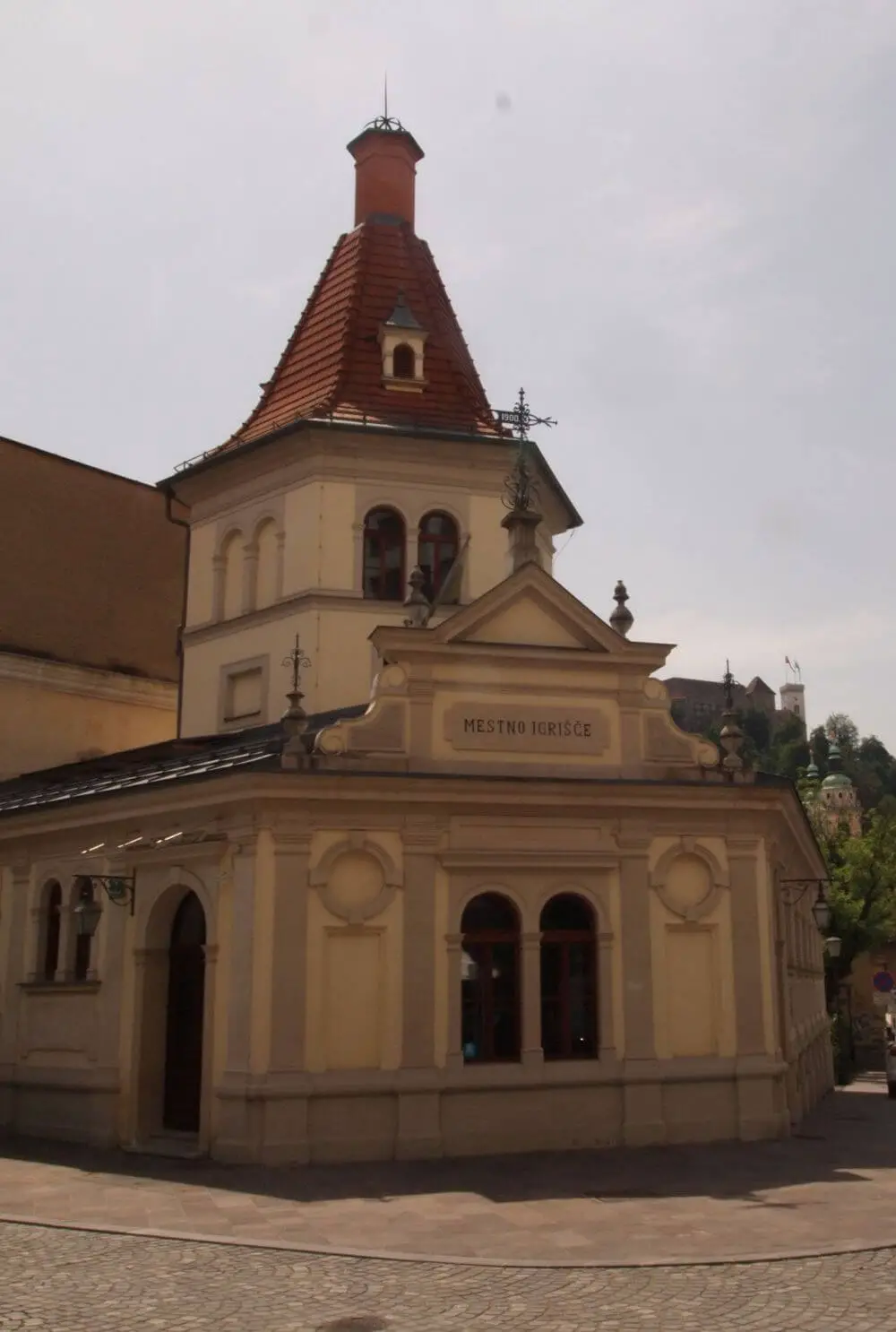
- Krisper House, 1901, architect: Maks Fabiani
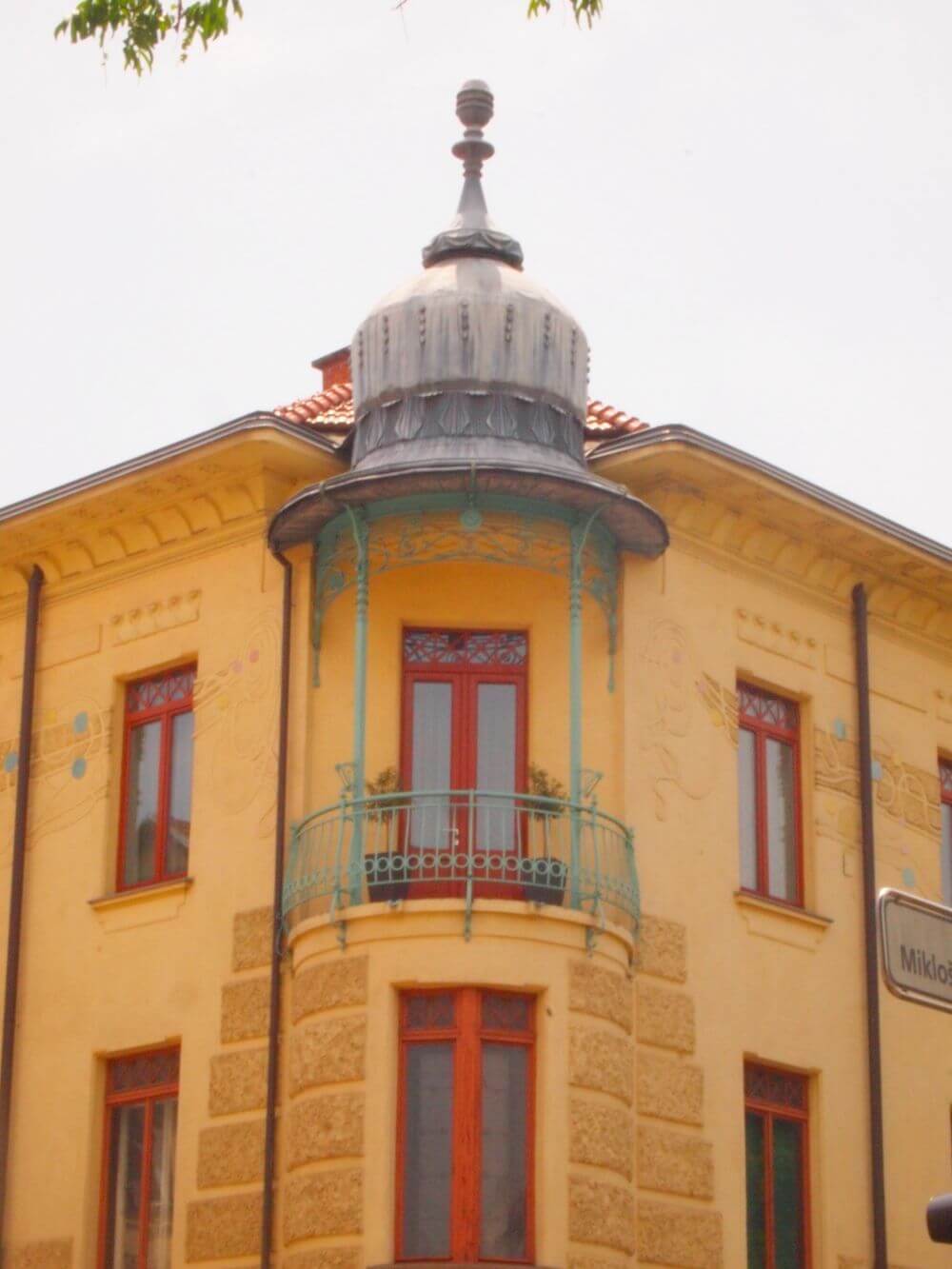
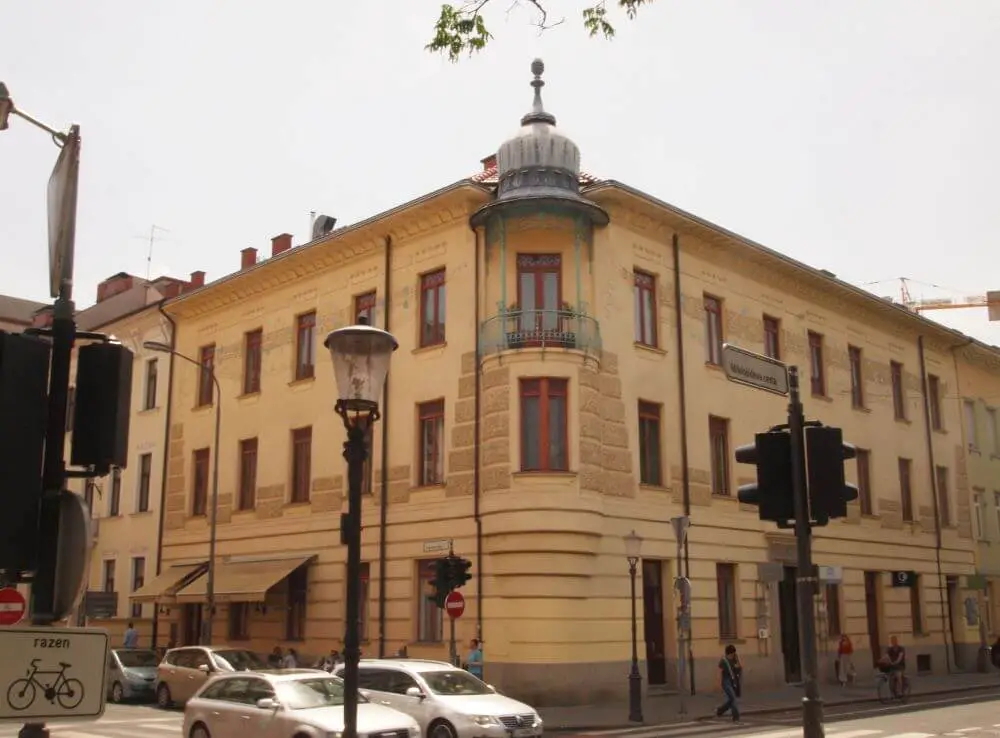
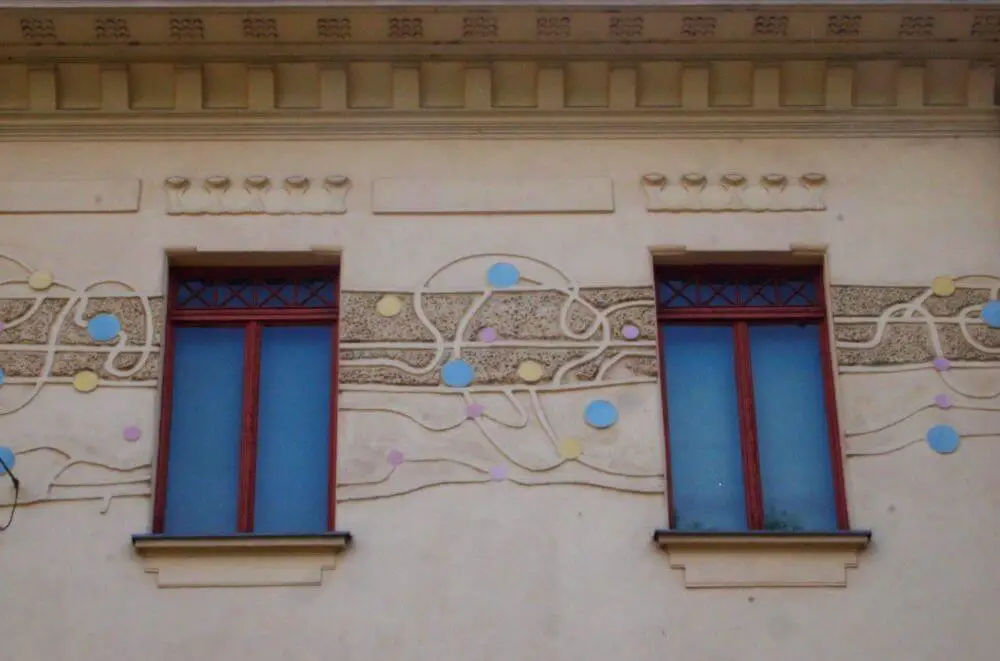
- Čuden House, 1902, architect: Ciril Metod Koch
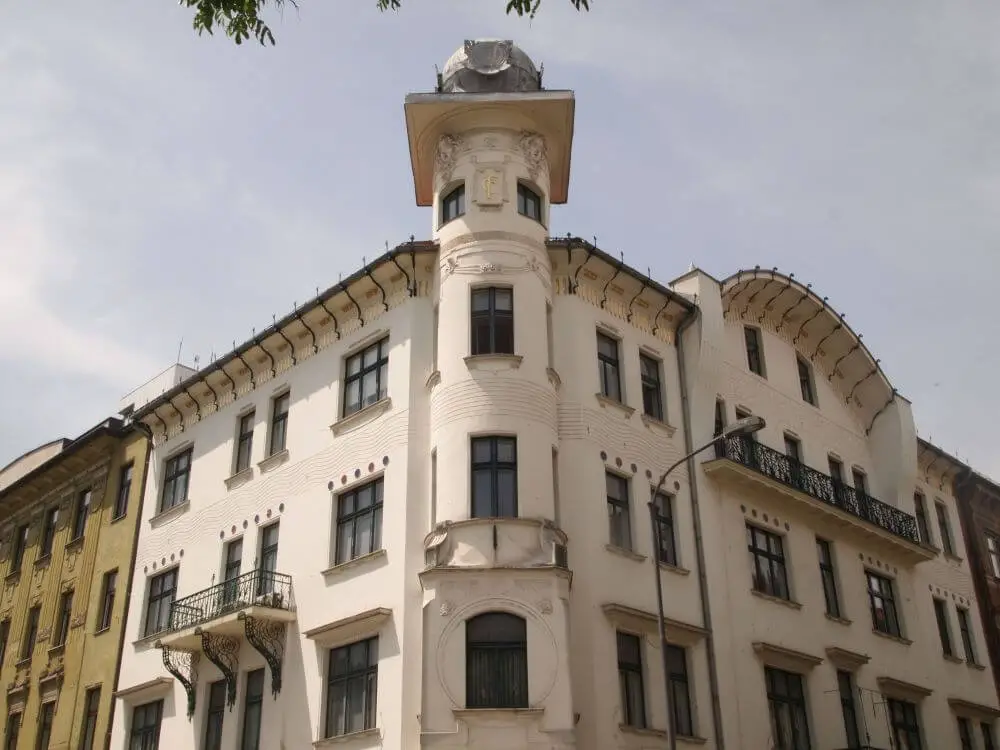

- Hribar House, 1903, architect: Max Fabiani
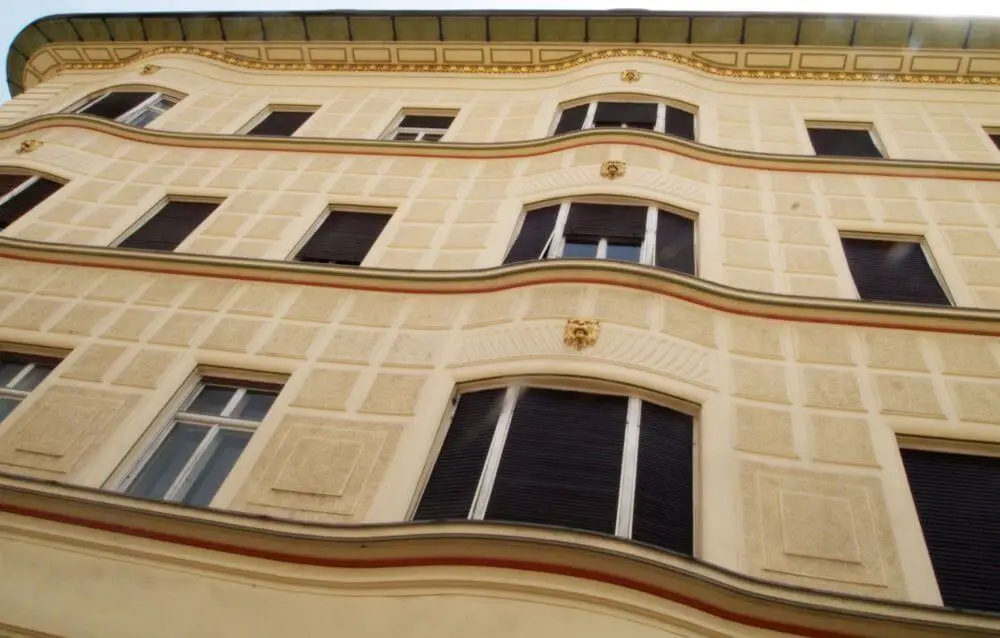
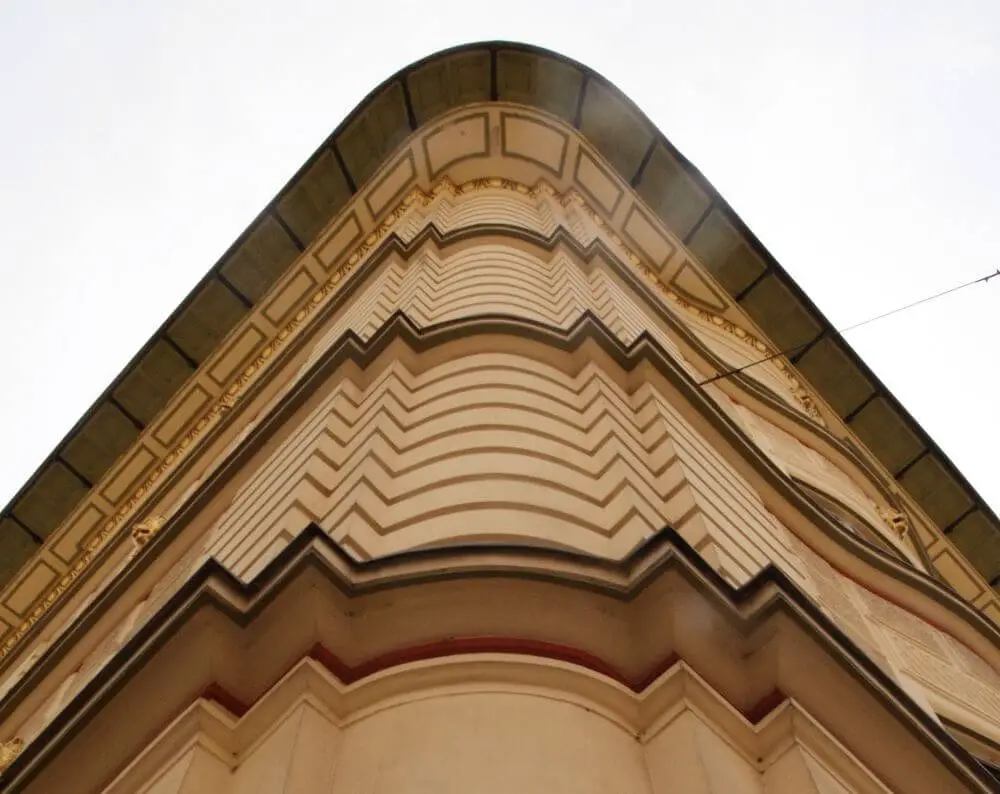
- Dalmatinova 3 House, 1903, architect: Robert Smielowsky
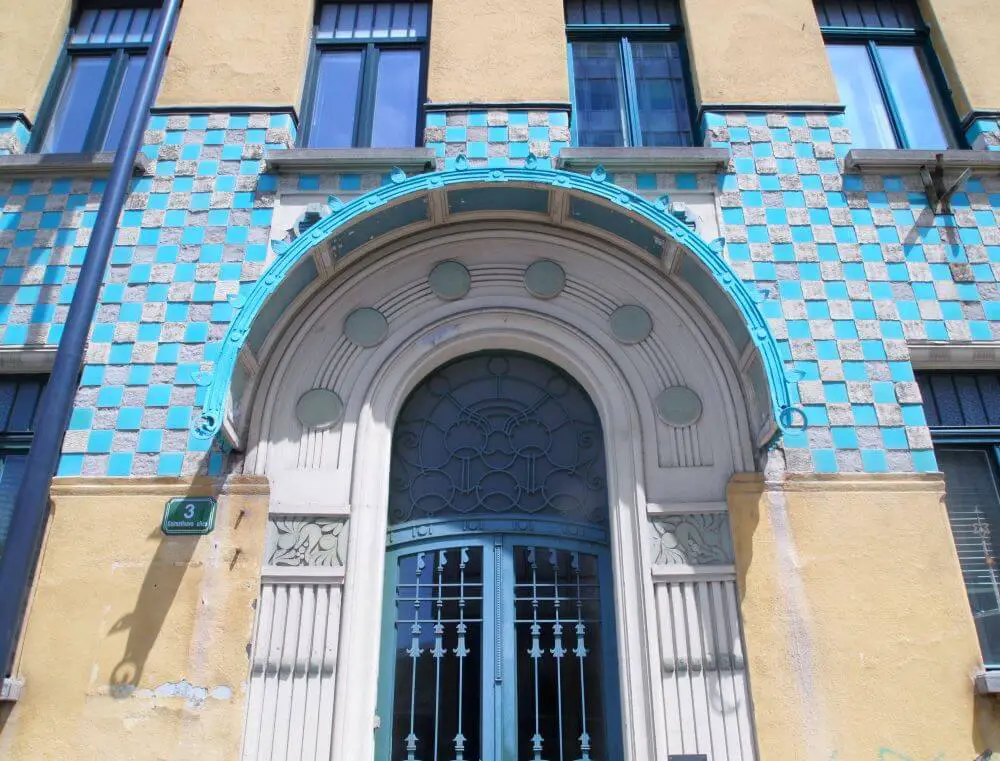
- Urbanc Department Store (now Emporium Gallery), 1903, architect: Friedrich Sigmundt
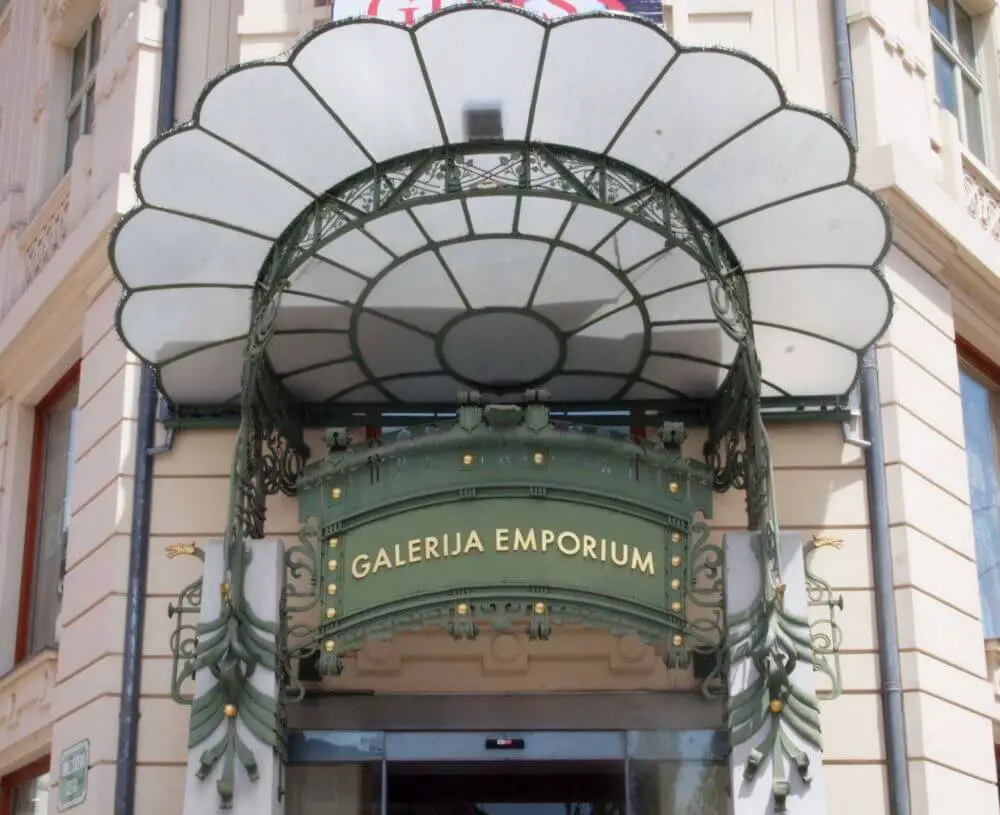
- Hauptman House, 1904, architect: Ciril Metod Koch
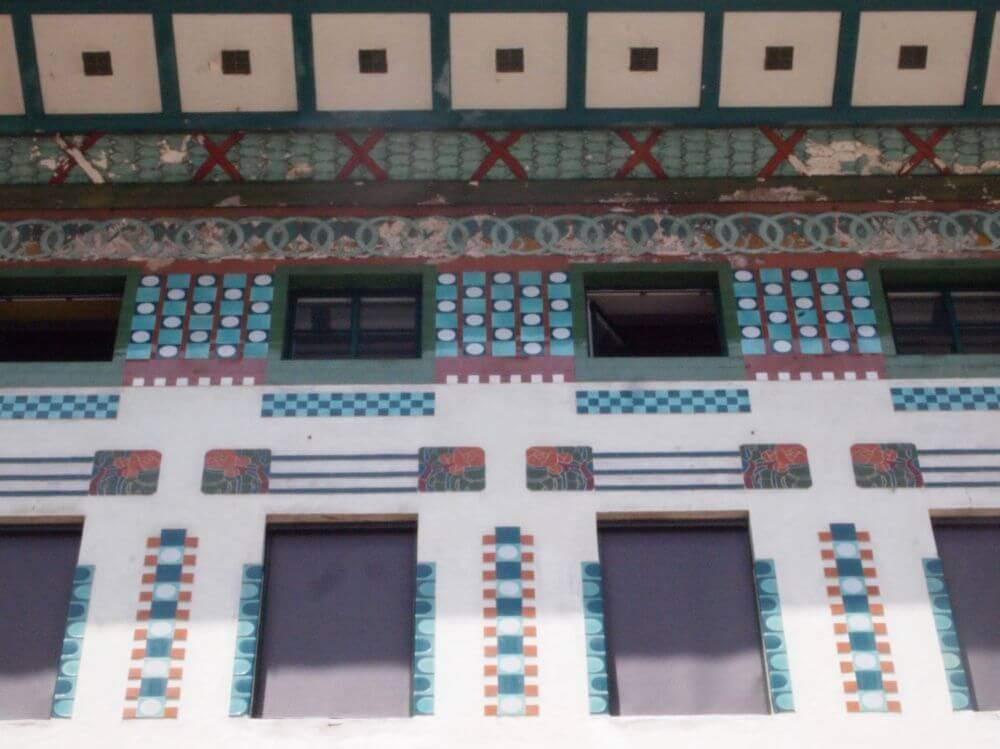
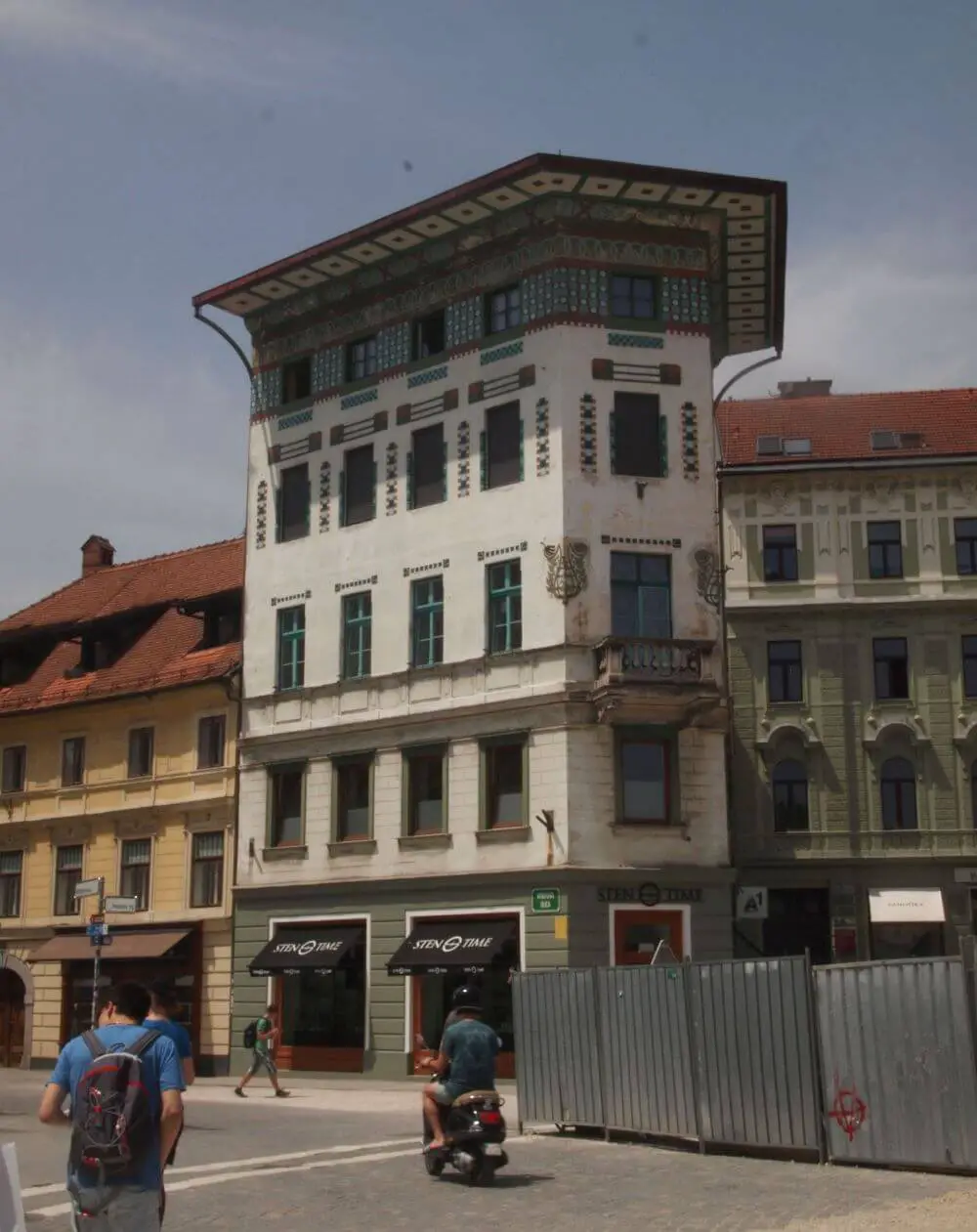
- Deghengi House, 1904, architect: Ciril Metod Koch
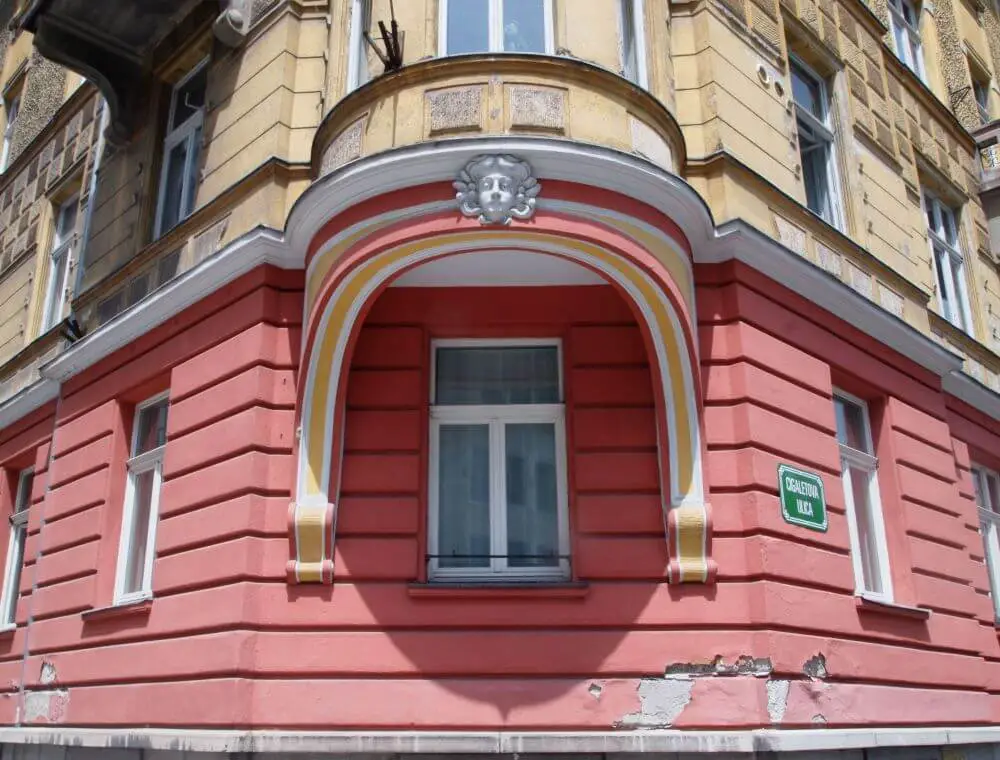
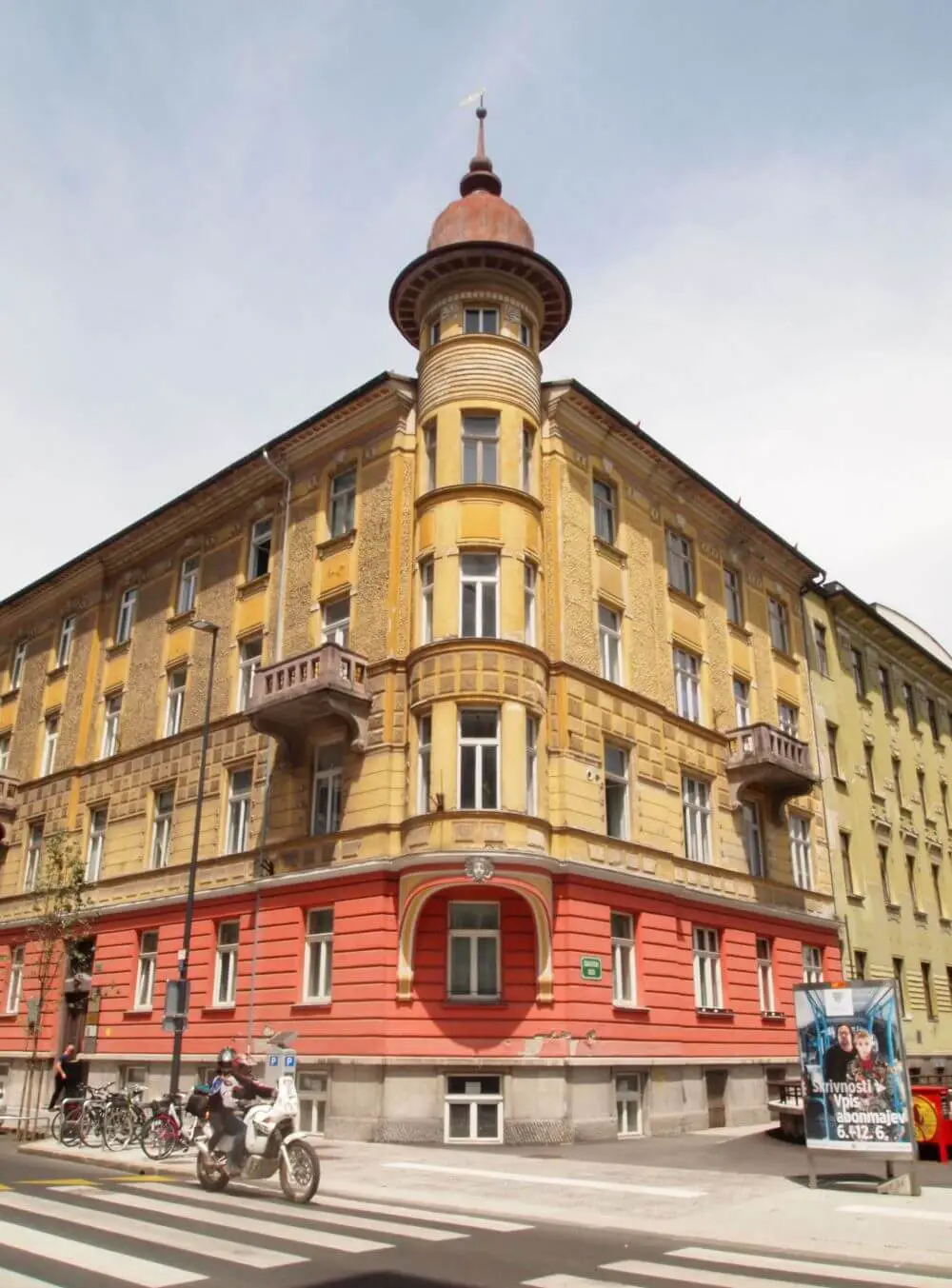
- Municipal Savings Bank, 1904, architect Josip Vancaš
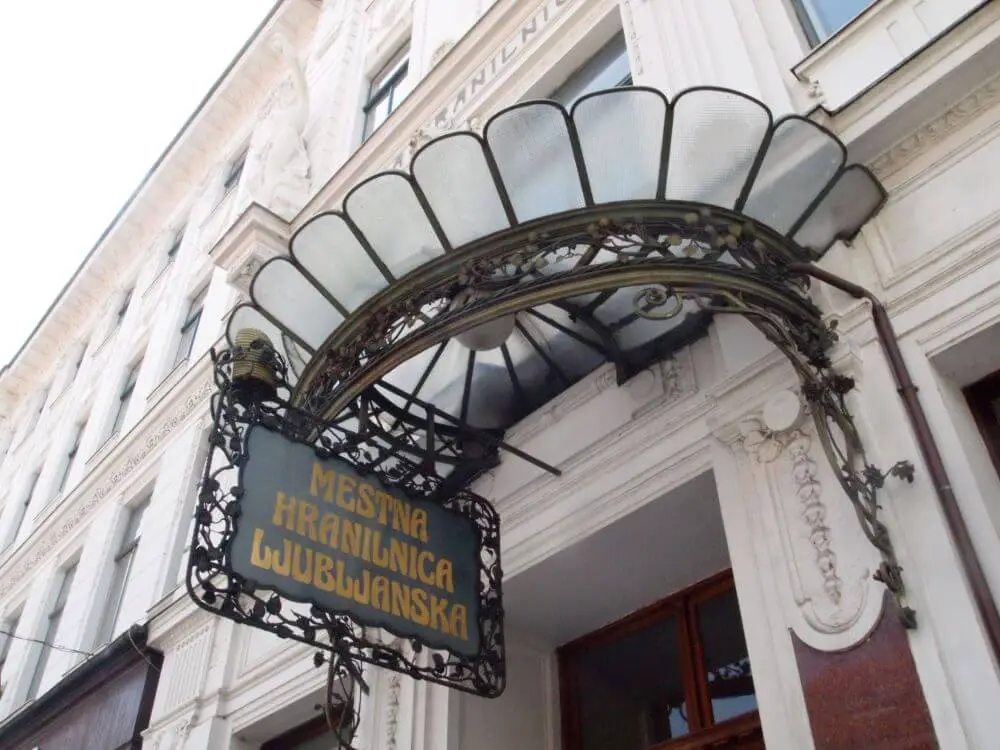
- Grand Hotel Union, 1905, architect: Josip Vancaš
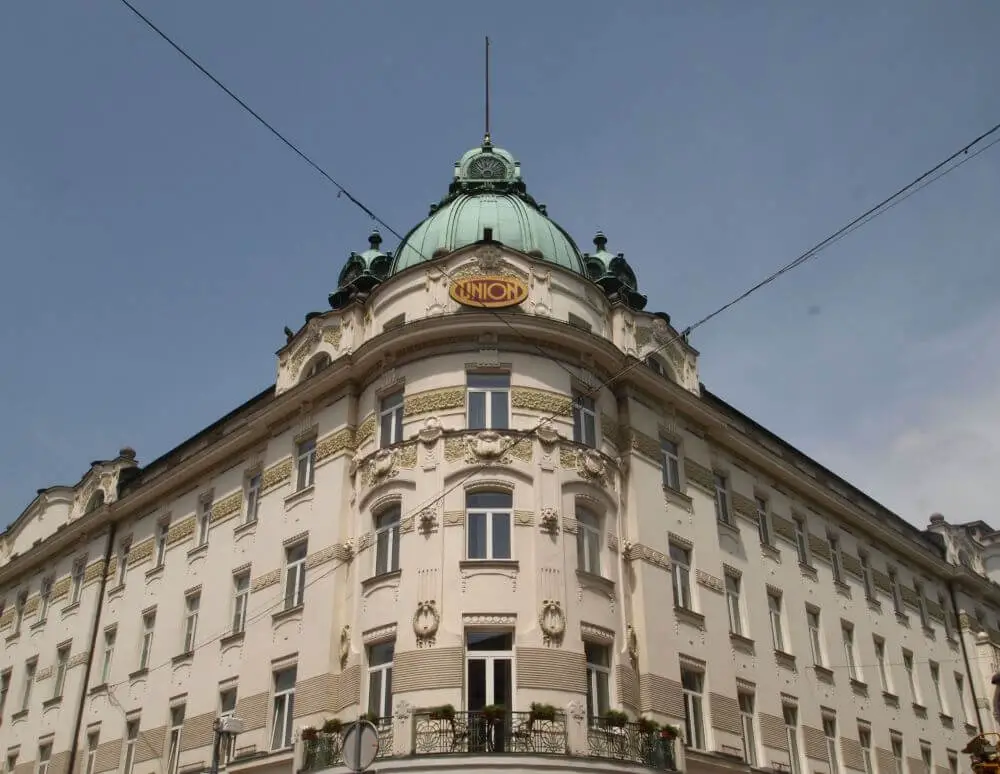
- Regalli House, 1906, building company Faleschini & Schuppler
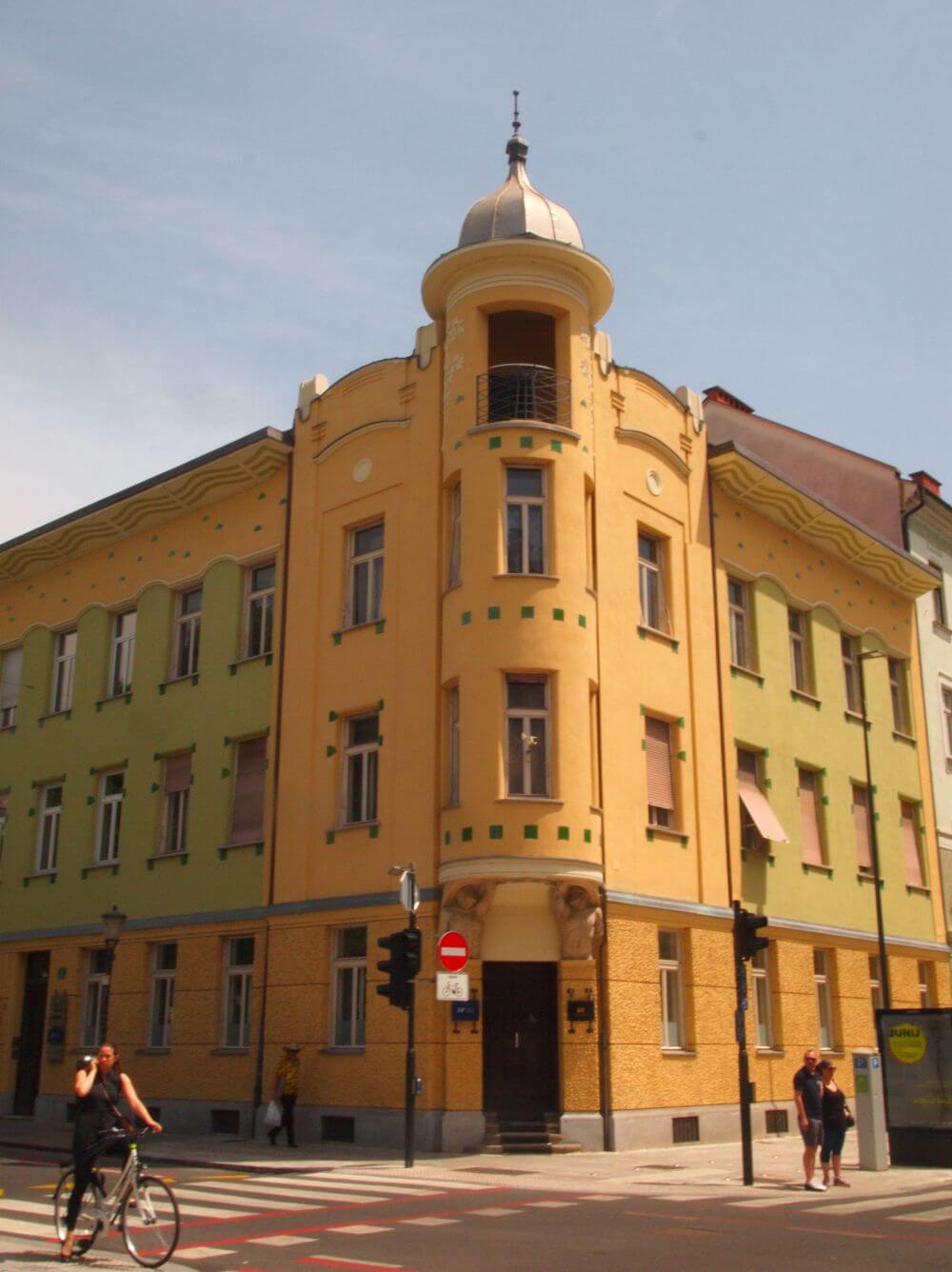
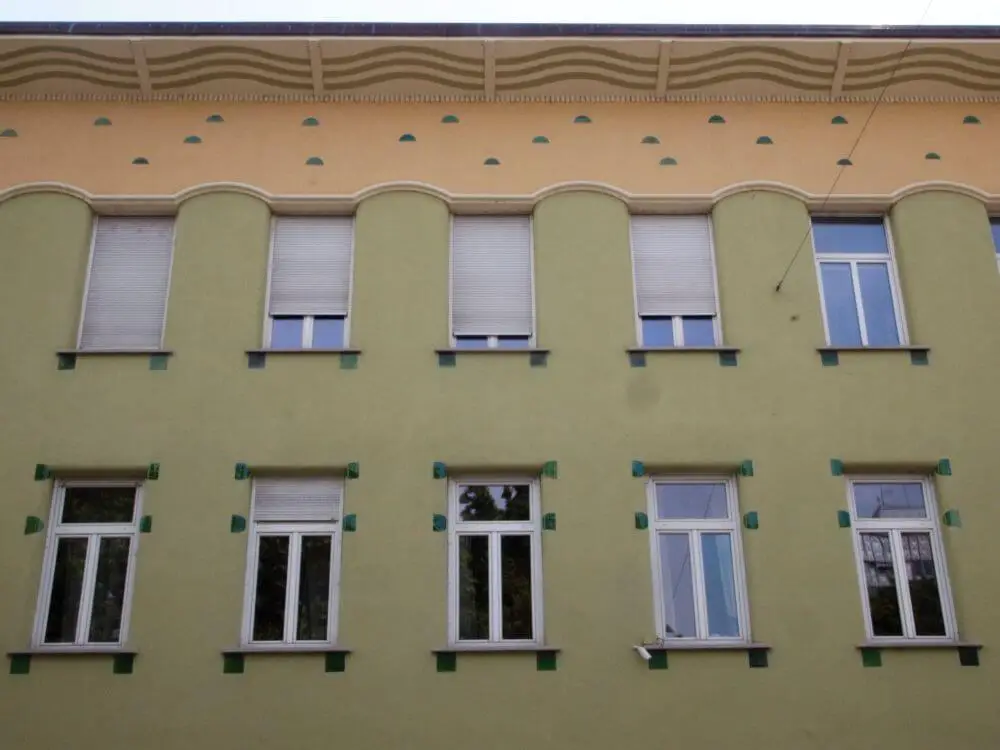
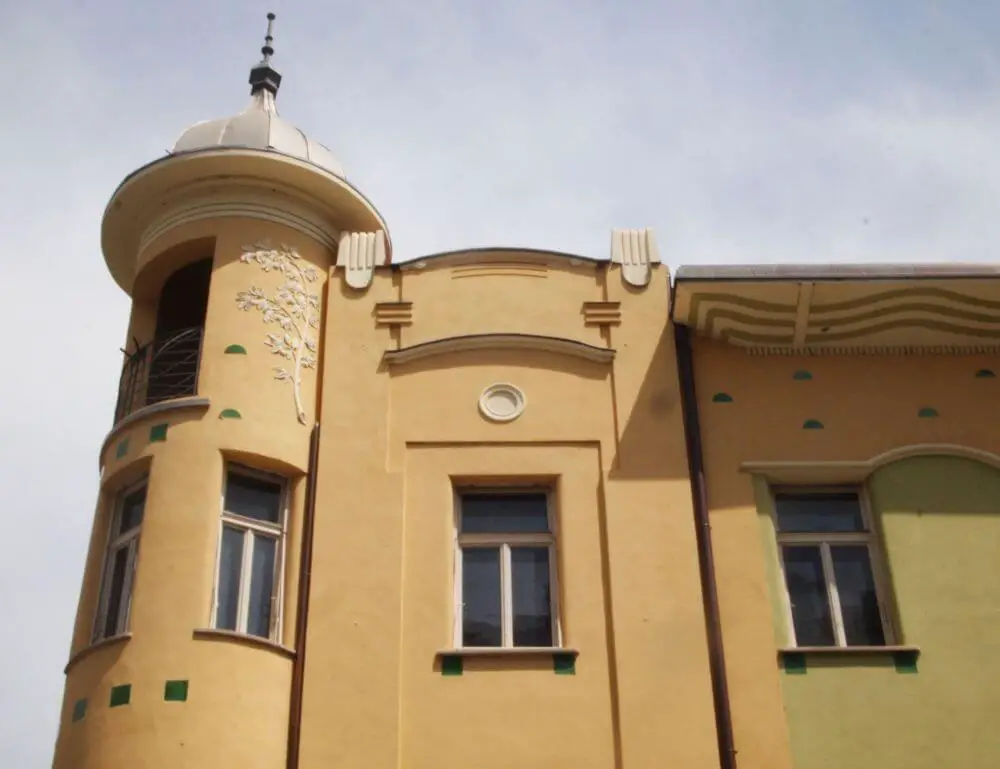
- People’s Loan Bank, 1907, architect: Josip Vancaš
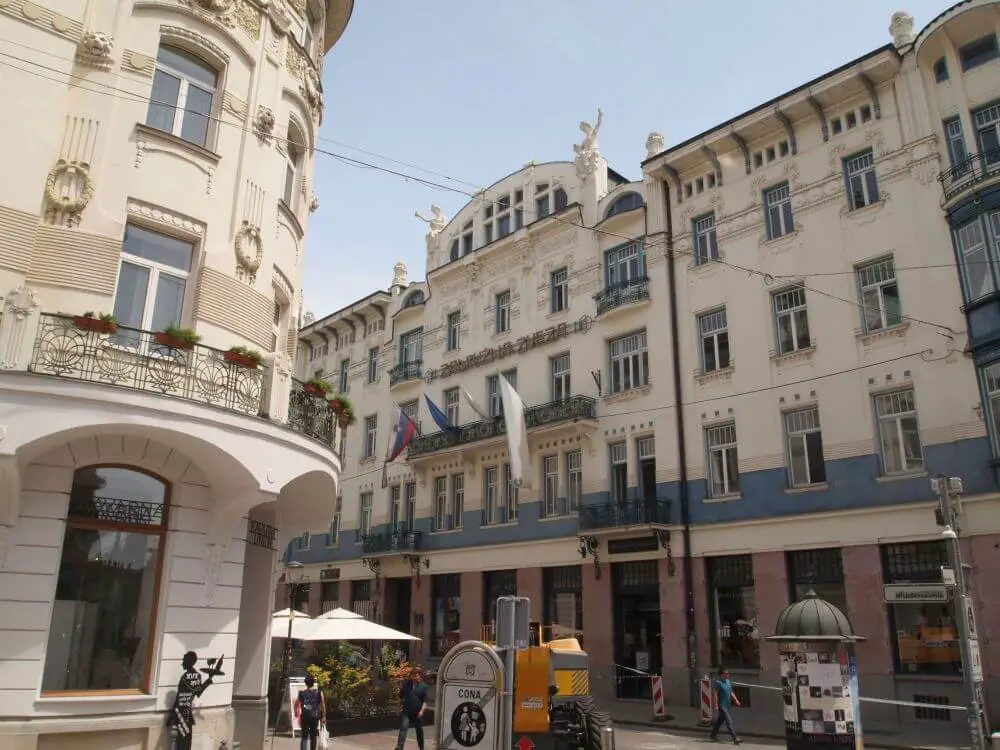
- Catholic Printing House (now the Faculty of Law of the University of Ljubljana), 1908, architect: Alois Cantoni
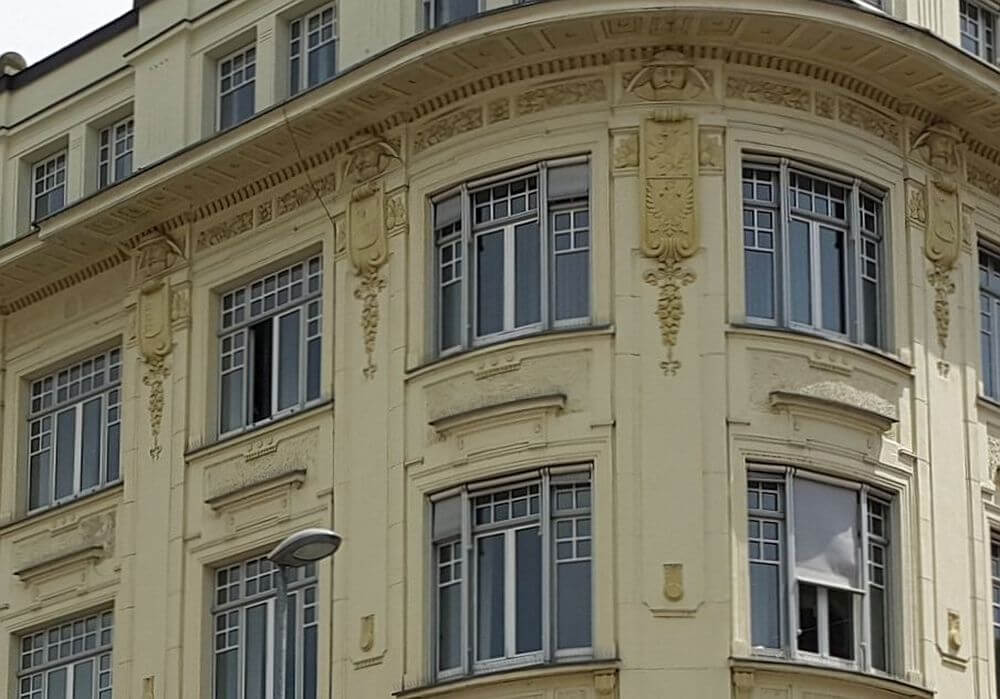
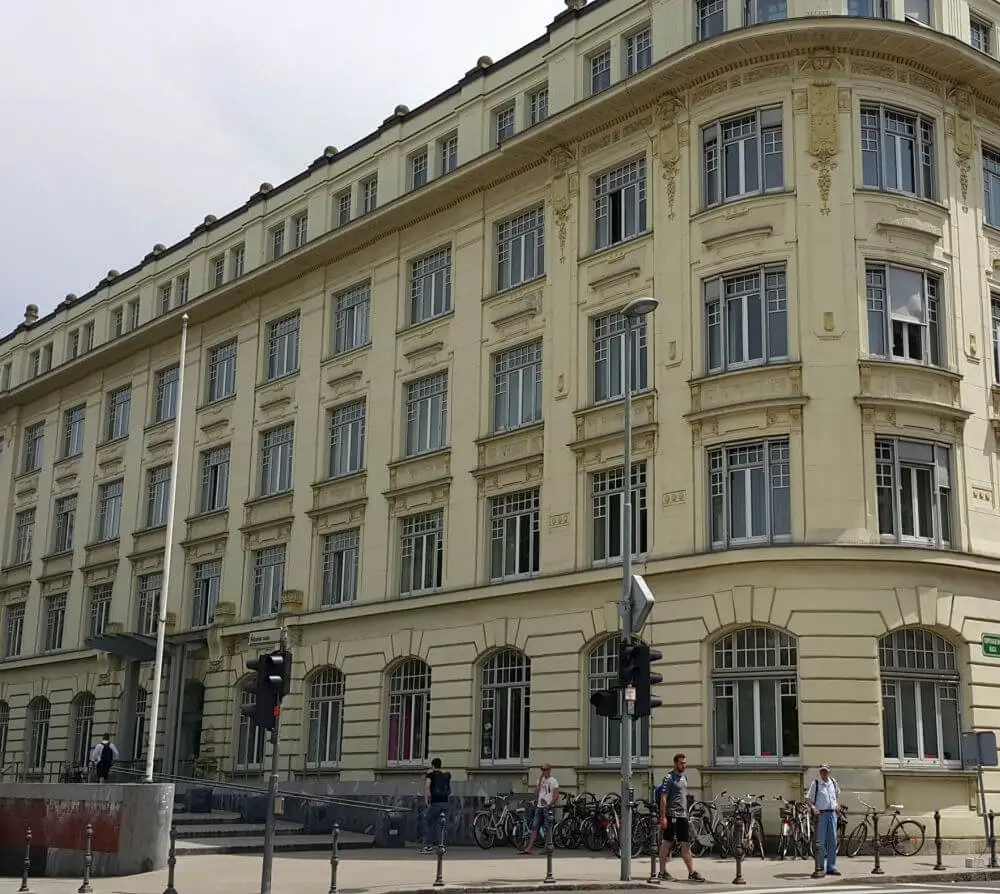
- German Theatre (now the Slovenian National Drama Theatre), 1911, architect: Alexander Graf
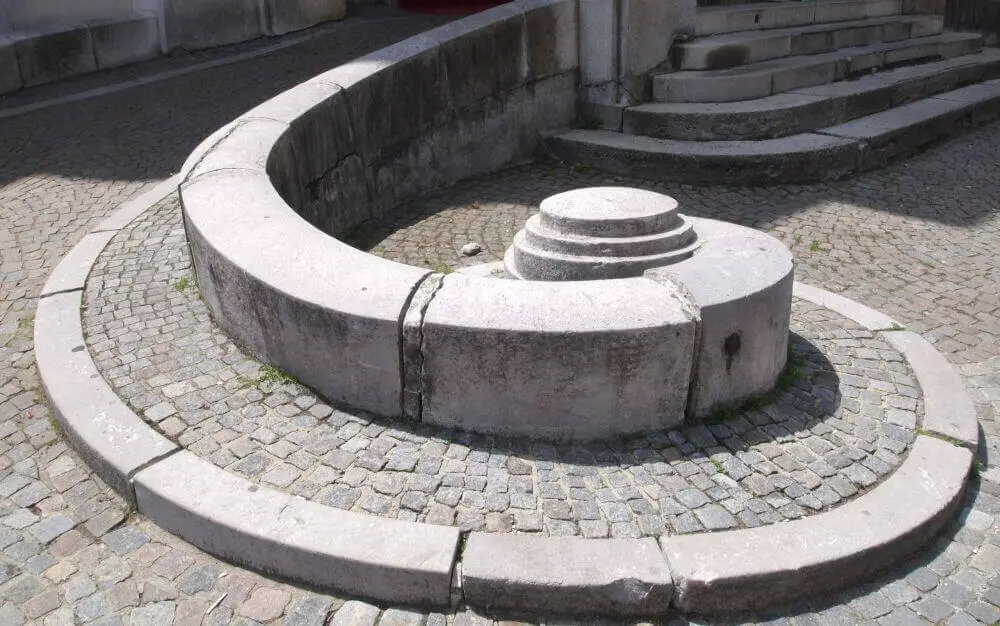

- German House, 1914, Ernest Schäfer Architectural Bureau
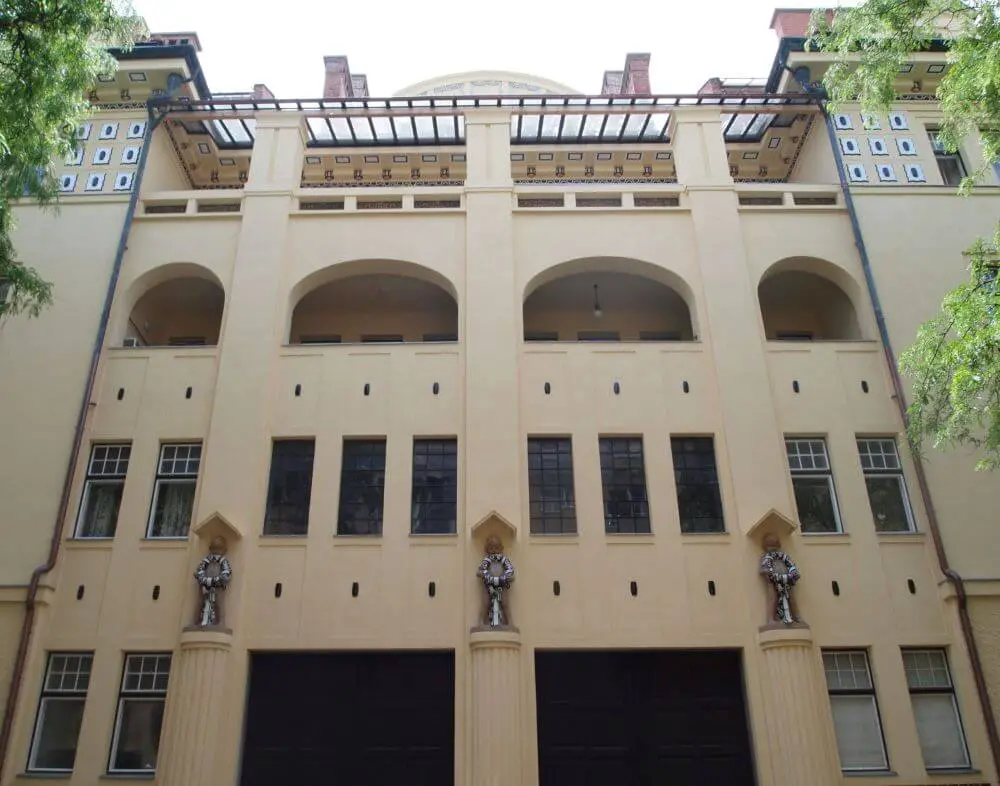
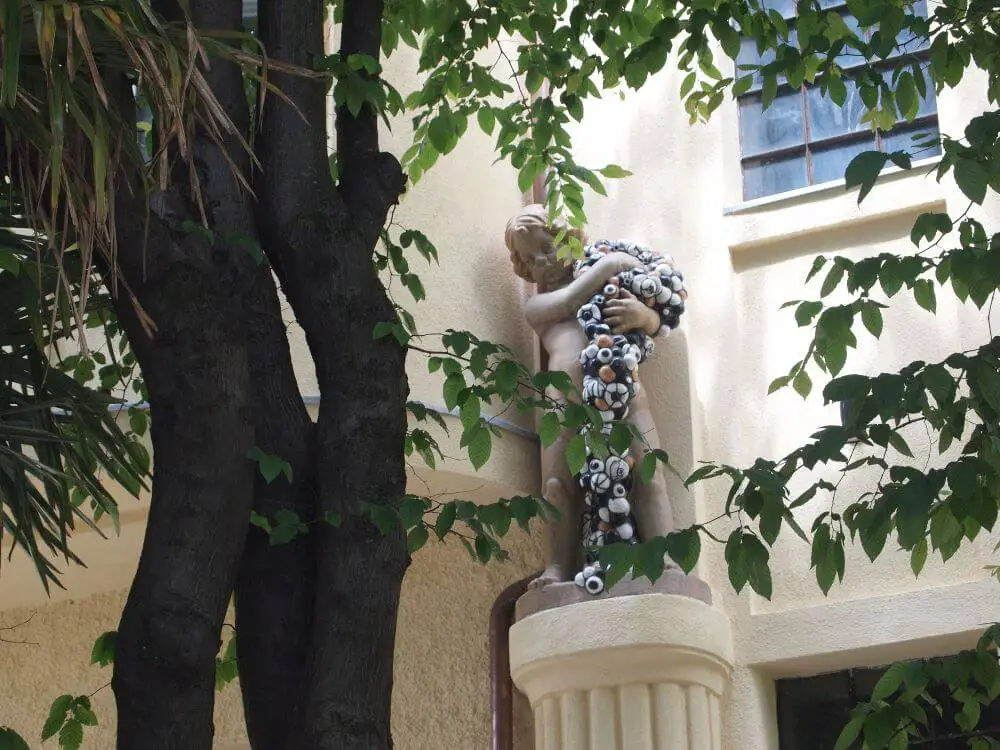
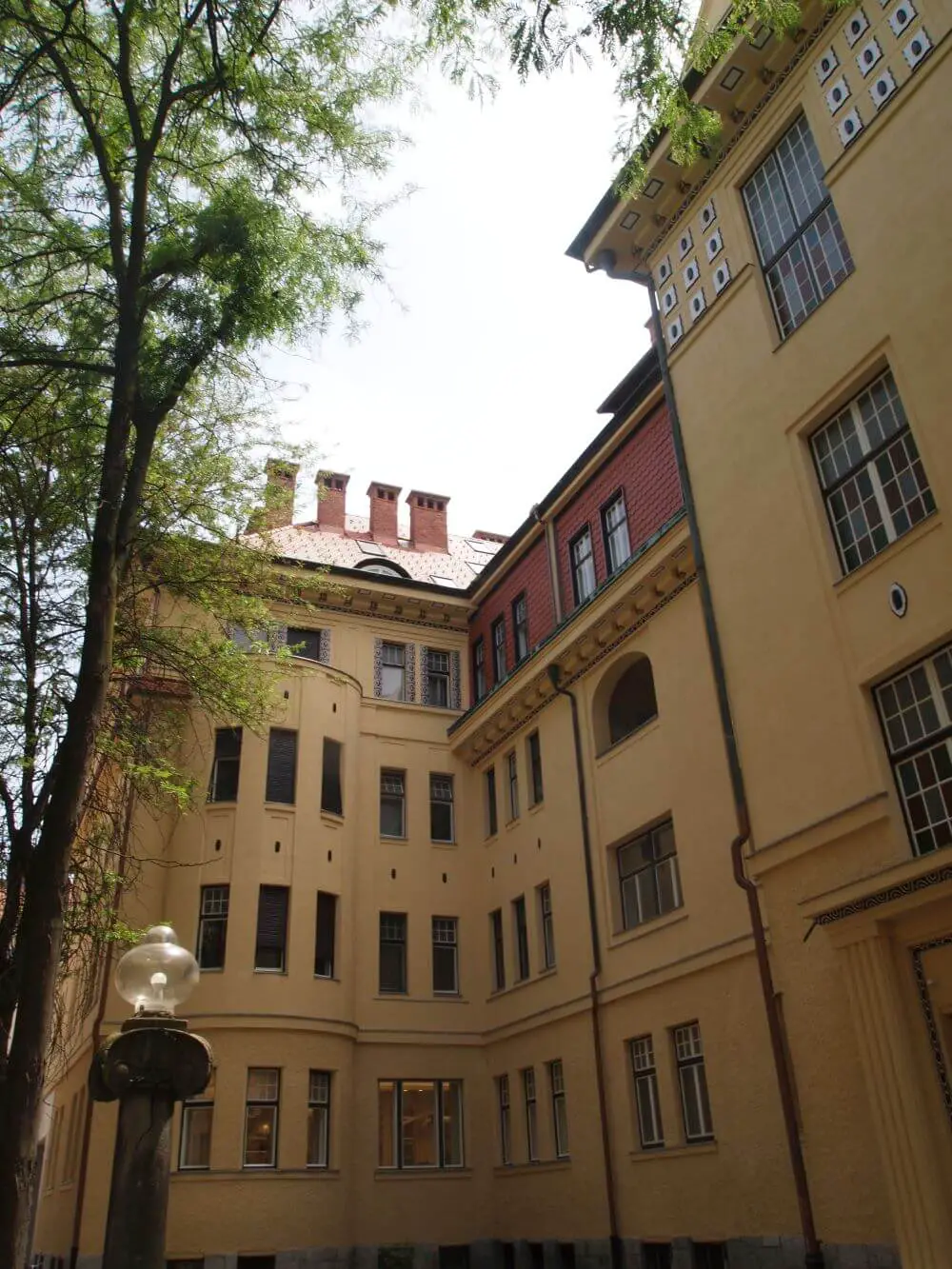
- Drofenig House, also Miklauc Department Store, 1914, architect: Karl Bruennler
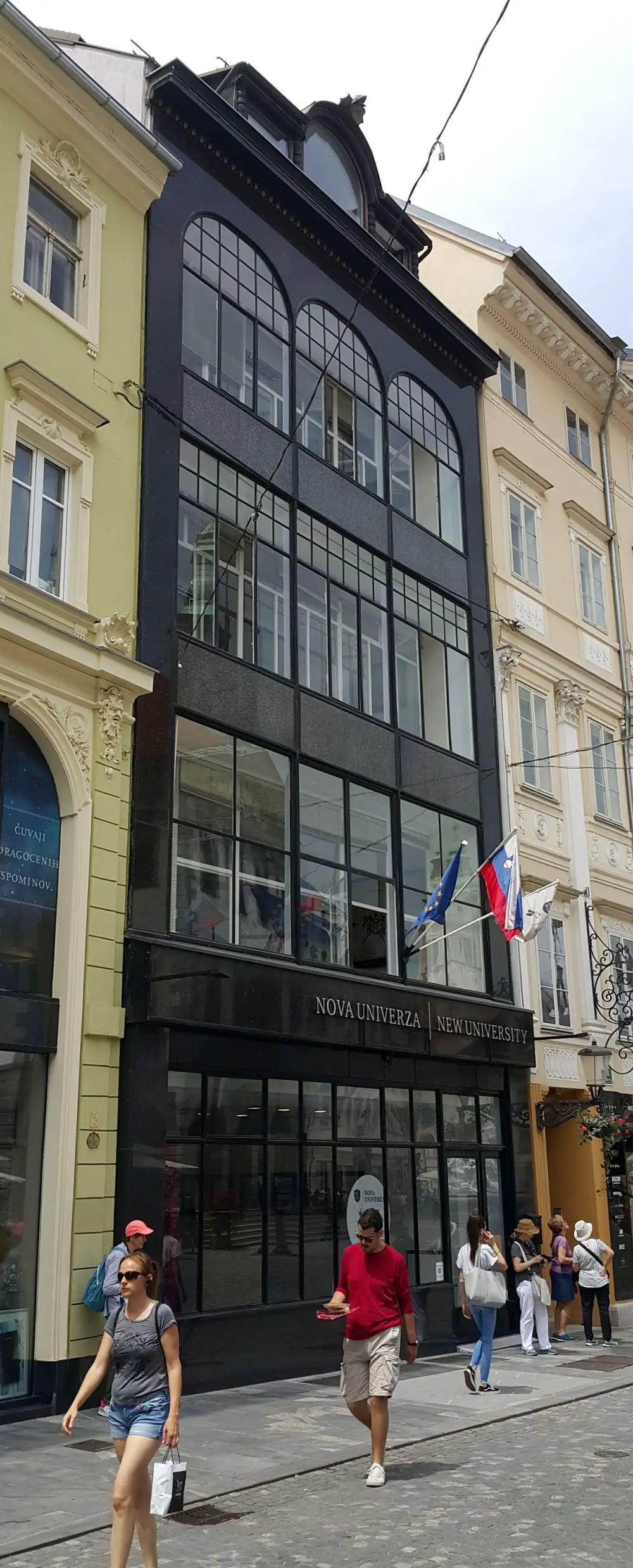
- Cooperative Bank, 1921, architect: Ivan Vurnik
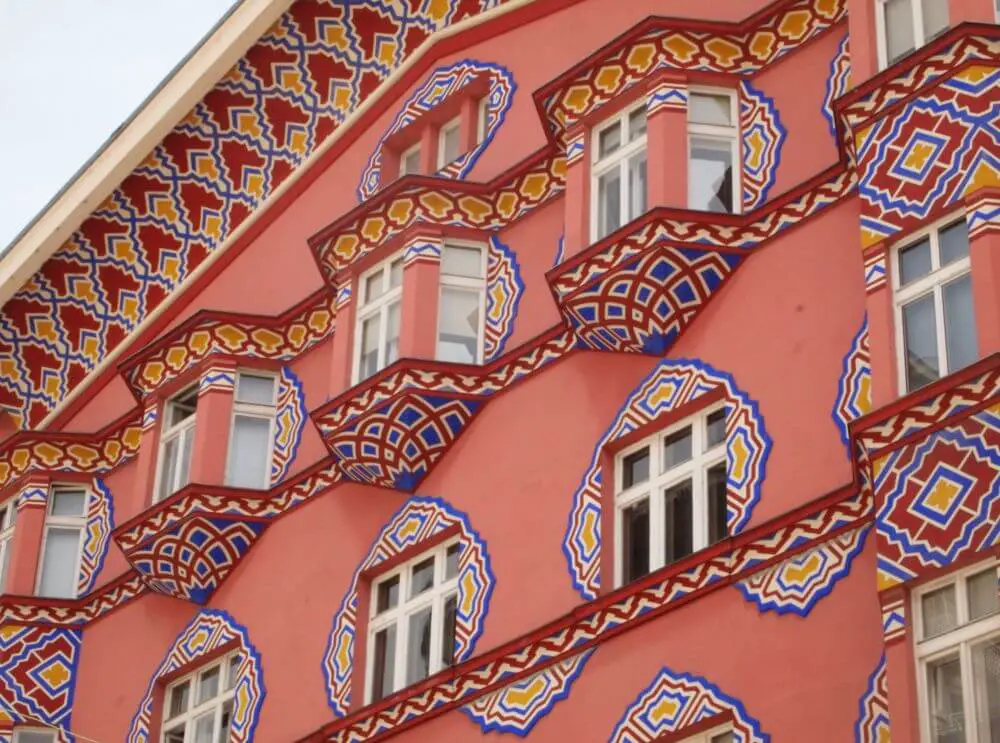
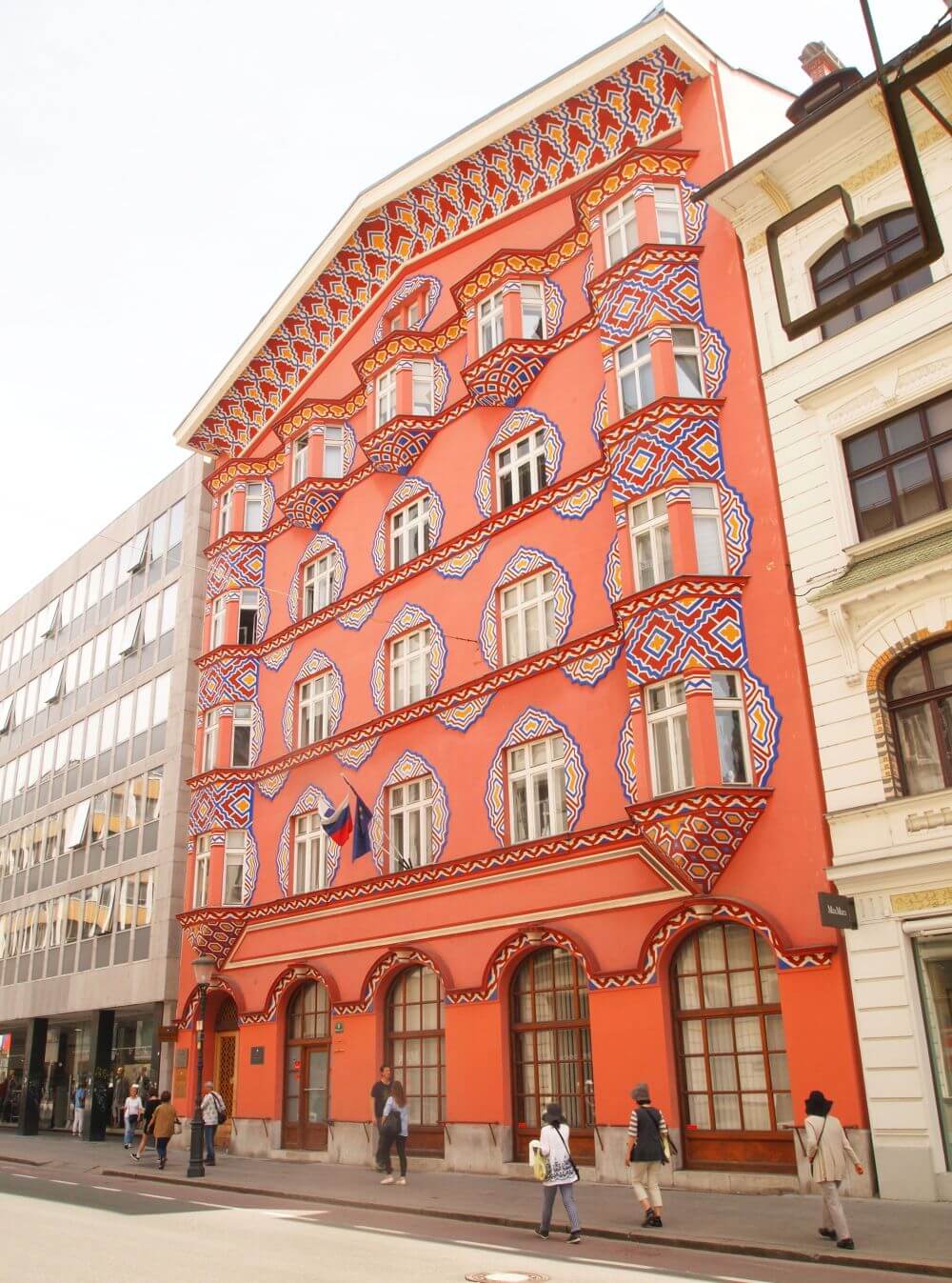
While Ljubljana Old Town is charming, as each tourist season goes by there are fewer stores that sell things a resident might actually need, with more practical shops getting replaced by those selling souvenirs, ice creams, high fashion items and so on. Nice to look at, but not much use when you need a pair of jeans, camera, USB cable, screwdriver, baking tray, bicycle or bookshelves.
So where does Ljubljana really shop, work and play? For many folk just a short drive or bus ride (#27) away from the Old Town at BTC City, a vast complex of shopping malls, business centres and entertainment facilities. It’s a place that now sees over 21 million visitors a year, from all over Slovenia and even neighbouring countries (with Croatians in particular coming for brands that are hard to find at home).
In the future I’ll be taking a deeper look at the various things on offer at BTC City, for both residents and tourists, but in this story I’m going to focus on one element that surprised me on a recent visit: the food you can get there. If you haven’t been for a while, or if your trips tend to be punctuated by quick cups of coffee or (in my case) a visit to what I believe is the only Burger King in the country, then you might be surprised at the depth and range of BTC’s current food offering, and how it’s making a serious claim as a food destination in its own right.
A home for ethnic food in Ljubljana
There are now more than 70 food vendors at BTC City, and since 2017 they’ve been marketed together under the label Food Bluz. The venture, which also includes a book produced in collaboration with Dr. Janez Bogataj (free PDF here in Slovene and English), was the first project presented as part of Slovenia’s role as European Region of Gastronomy 2021. However, while a broad range of Slovenian food is available at many of the restaurants, one of the great draws of the BTC’s current food offer is the varied menus from further afield, with Thai, Indian, Chinese, Mexican and more to tempt hungry visitors.
Thus in addition to being a well-established hub for business, commerce and innovation - bitcoins are accepted, and the place is a test ground for electric and autonomous vehicles - BTC City is now a nexus of culinary exploration. On my visit, undertaken with a writer from Croatia and with the excuse of research, I managed to cram in four meals and more drinks in one long day, while gazing longingly at many others.
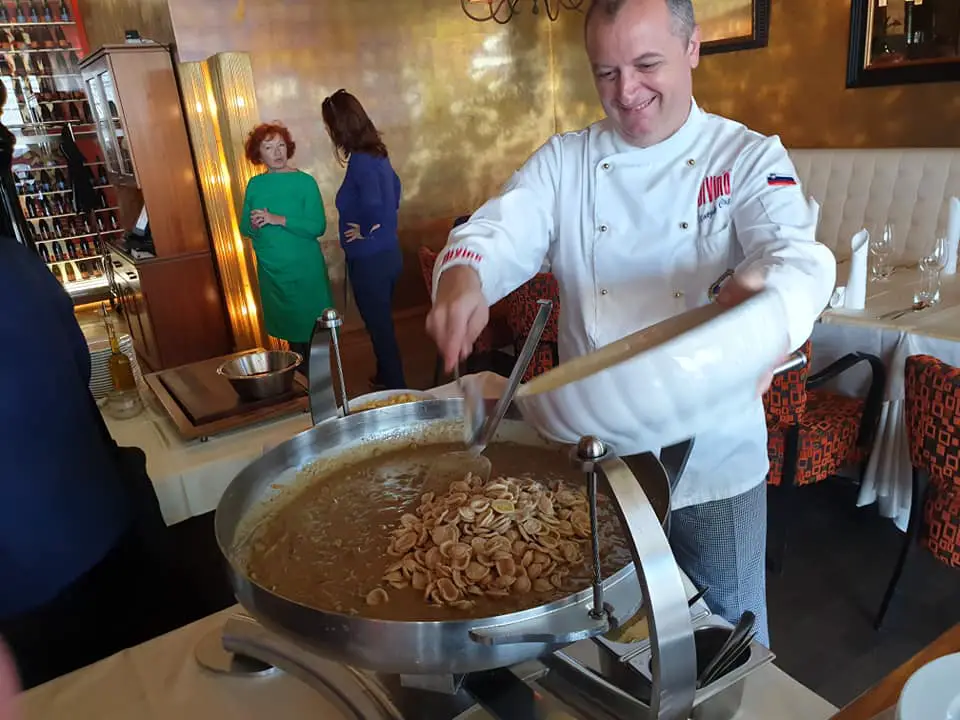
Pasta from a master. Photo: Paul Bradbury
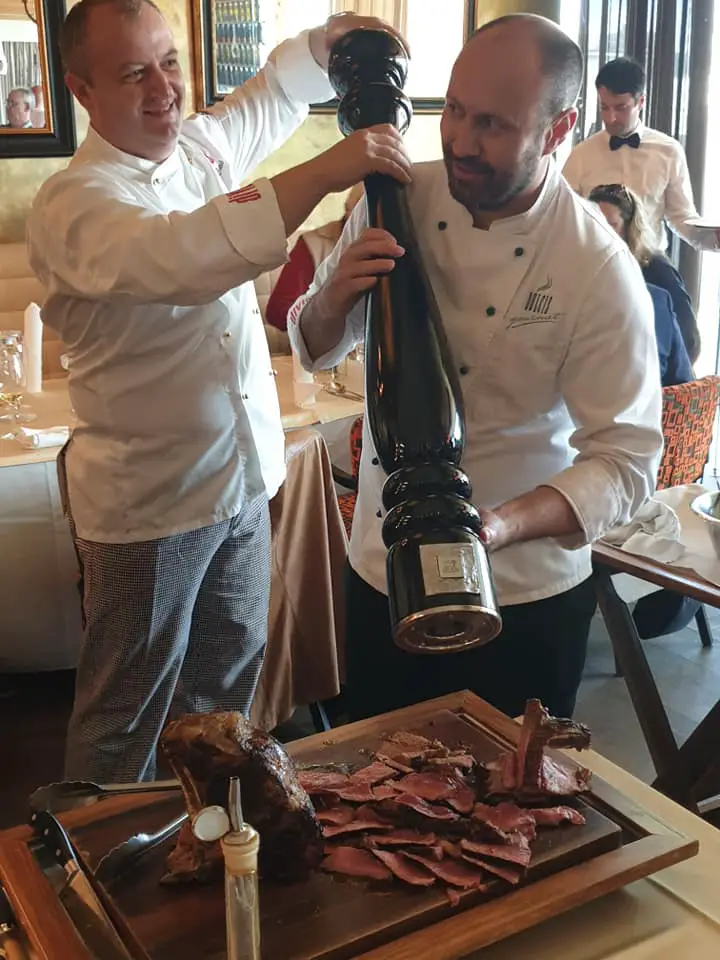
What's bigger than a Rubirosa? Photo: Paul Bradbury
First up was a trip to diVino, a three-floor place next to Kritalna palača (Crystal Palace), with a mix of customers from the local offices and businesses – which include BMW and Microsoft – as well shoppers and those who, like myself on this particular day, are just out to see what’s newest BTC City. DiVino aims to marry the traditions of Goriška brda with those of the Mediterranean, while keeping up on culinary trends. The man at the centre of it all is Chef Matjaž Cotič. He’s worked in Milan, Nice, Paris, Chicago and Basel and picked up many awards and titles along the way, with the two most appropriate for his current position being Italian Culinary Masterchef and the World Vice-Champion in Preparing Pasta (awarded by Barilla). Guests are thus assured of top quality ingredients, handled with care, and on my visit I enjoyed some fantastic Istrian-style pasta with asparagus, along with some aged beef, cooked rare and seasoned only with salt, pepper and olive oil. This was accompanied by a few glasses of Mare Santo penina, each bottle of which spends some time 20-30m under the sea. The temperature at this depth, along with the actions of the currents, are said to be especially good for the wine, as is the infusion of minerals through the cork. All I can say, since I’m no sommelier, is that it tasted great, and no, it wasn’t salty.
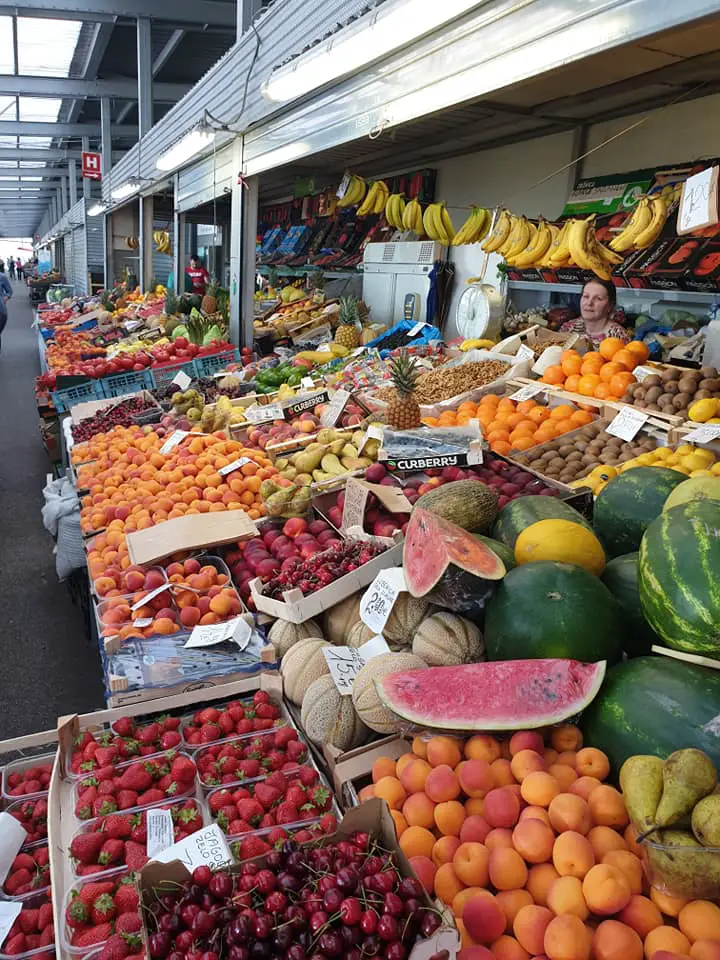
There's an extensive fresh food market at BTC City. Photo: Paul Bradbury
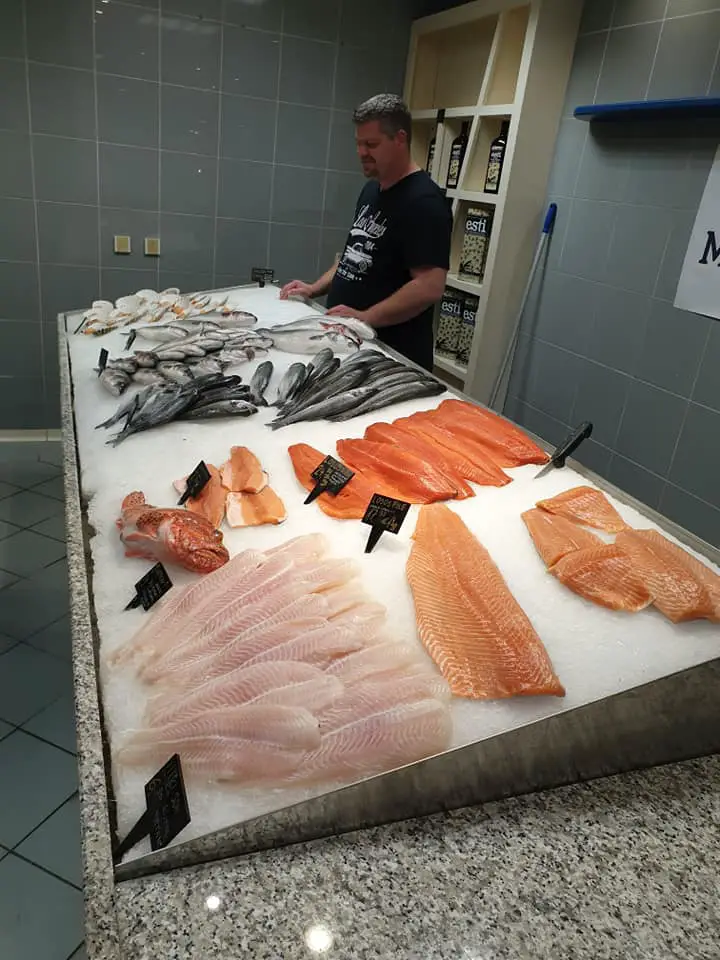
Photo: Paul Bradbury
We then visited the impressive street food market. This is a permanent, open-air affair, a little like Ljubljana’s summertime Open Kitchen, with local and regional delights, as well as Thai and Indian food, and it’s worth browsing first to both see what’s on offer and work up an appetite. Sadly mine was still satisfied from diVino and I had to forgo a curry, but still got a bottle of Singha beer to enjoy the feeling of being somewhere else.
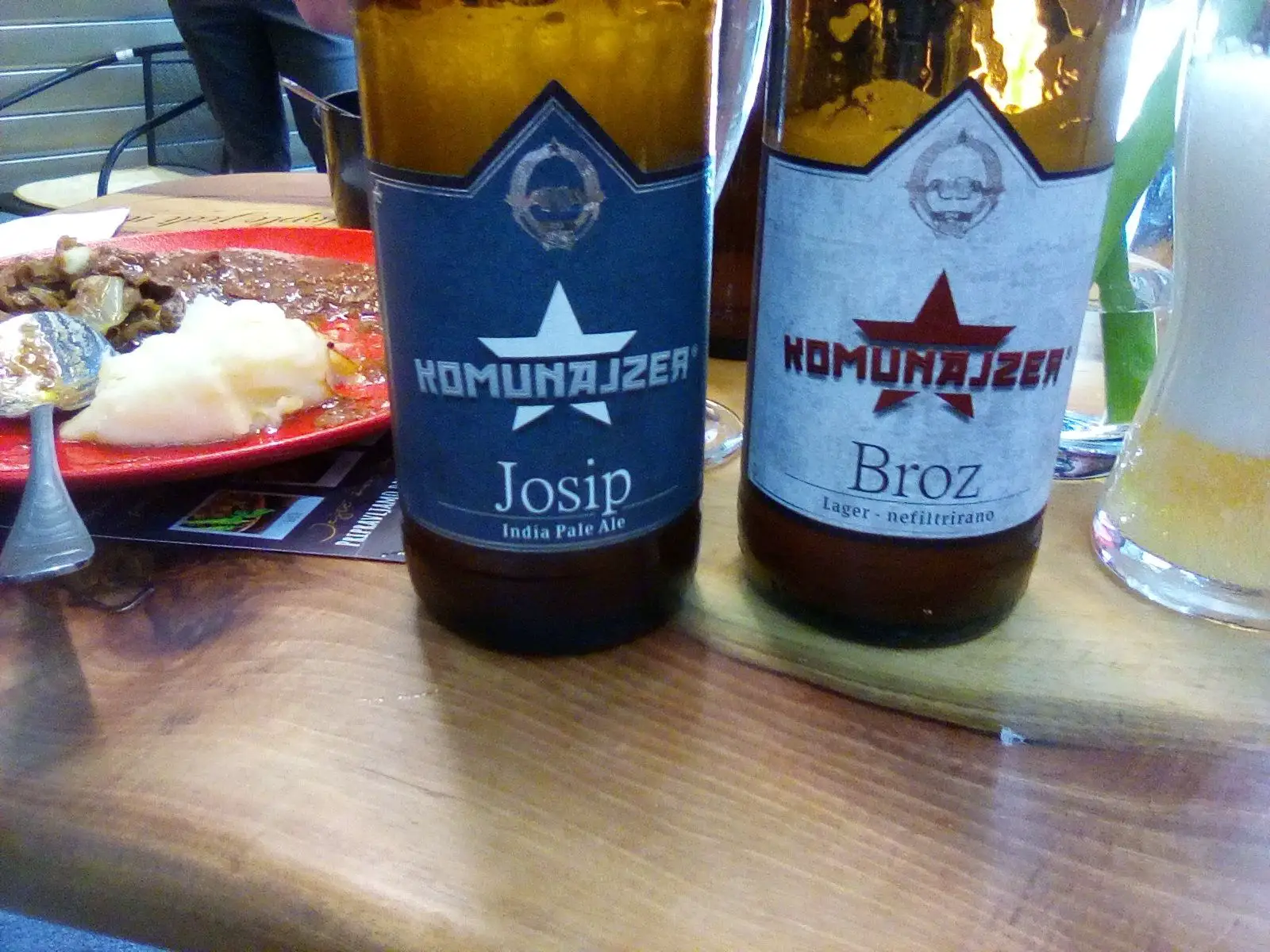
What happens after Tito's gone? Photo: JL Flanner
It was hot day, though, and after a further walk around BTC City, including a visit to (look at) the Adrenaline Park and meet an urban beekeeper whose hives are just behind the bushes, my companion and I were again feeling thirsty and in need of shade, and so ventured to Škrnić LJ (in Tržnica jug). This is a Slovenian restaurant that specialises in in one-pot dishes that can be eaten with a spoon, essentially stews and soups. We originally planned to share just one bottle of beer, but when we saw the names of some of the craft brews on offer – Josip, Broz and Tito – we had to sample all three. The alcohol awoke my appetite, and I ordered a plate of fried liver, gravy with mashed potato that was simple and fantastic.
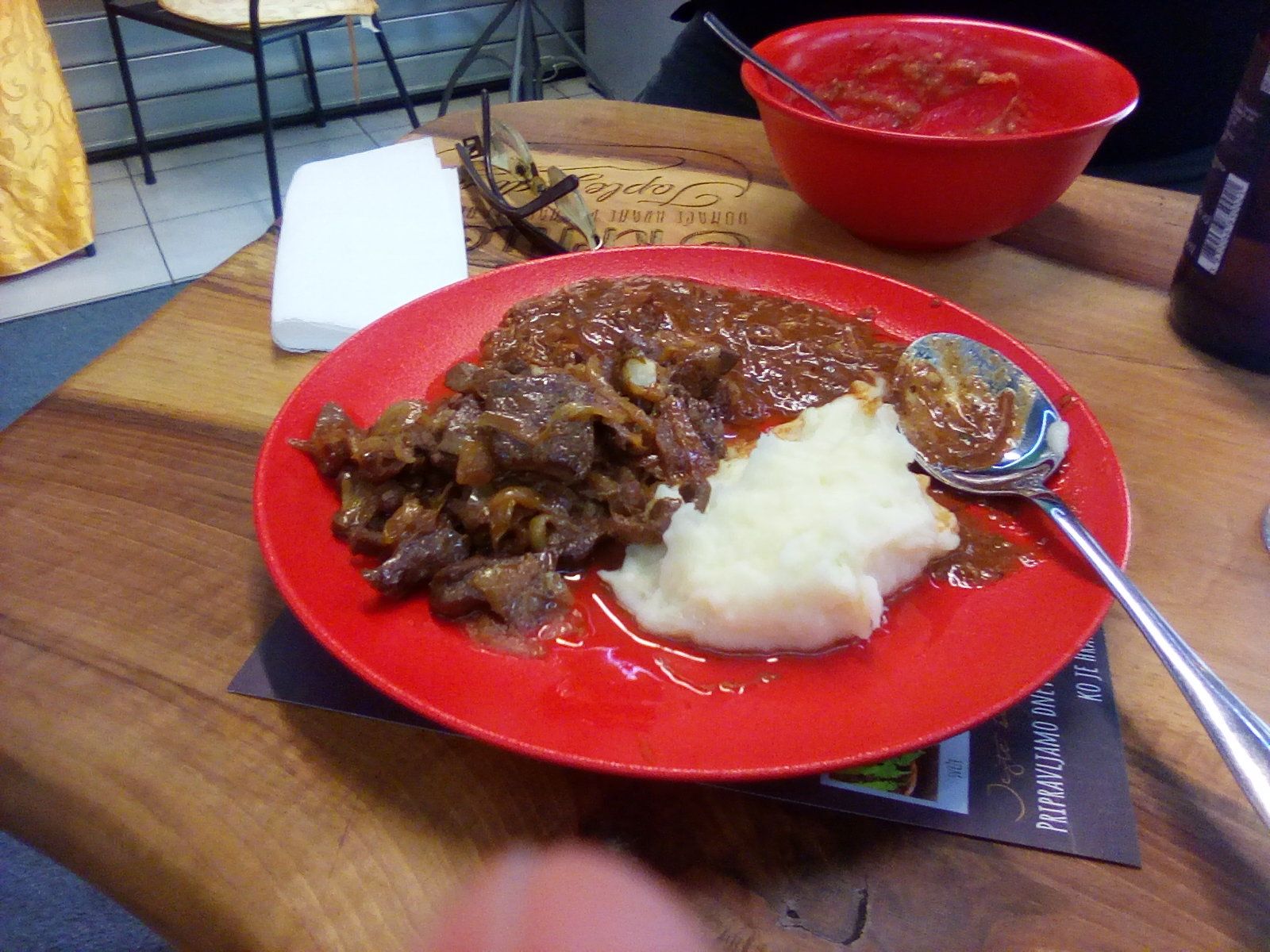
Liver, onion, mashed potato. Photo: JL Flanner
Food for all tastes at BTC City
Next door to Škrnić LJ is the Hiša Refoška, or House of Refošk, with Refošk being a red wine well-suited to hearty meat dishes. True, I’d finished the liver, but with the beer to encourage me I sampled a glass or two of wine here, made some notes, then moved on, determined not to be distracted by any more food and drink until I’ll I’d at least made an effort to see some of the 100s of stores that BTC City has.
Luckily, just a few steps further into the Tržnica jug I found an unexpected branch of Svilna Pot (“Silk Road”). This is an Asian food store that also operates on Trubarjeva cesta, and is run by the people behind the same street's Osho (selling Thai and Vietnamese food), as well as Bistro SUWON, one of the few, if not only, Korean restaurants in the capital. I stocked up on black label Shin Ramyun spicy ramen, Thai red curry mix, bags of sushi ginger, and some Indian powders and pastes.
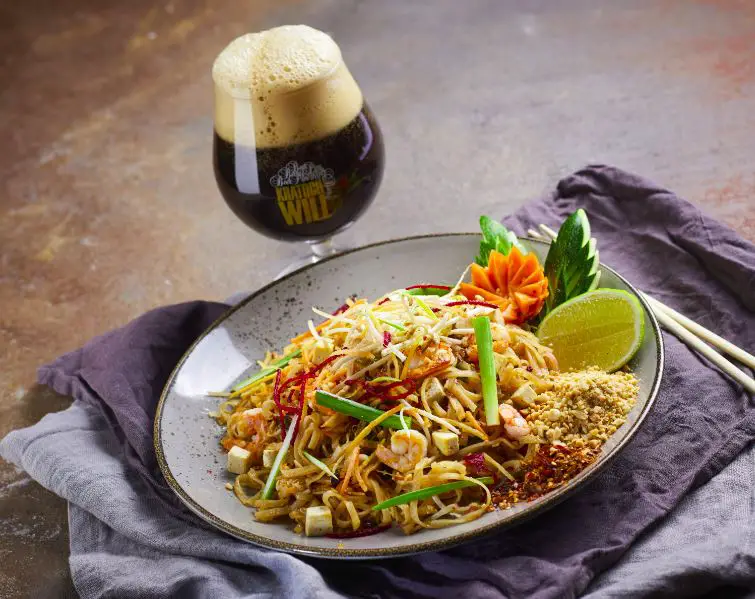
Pad Thai and porter. Photo: Kratochwill
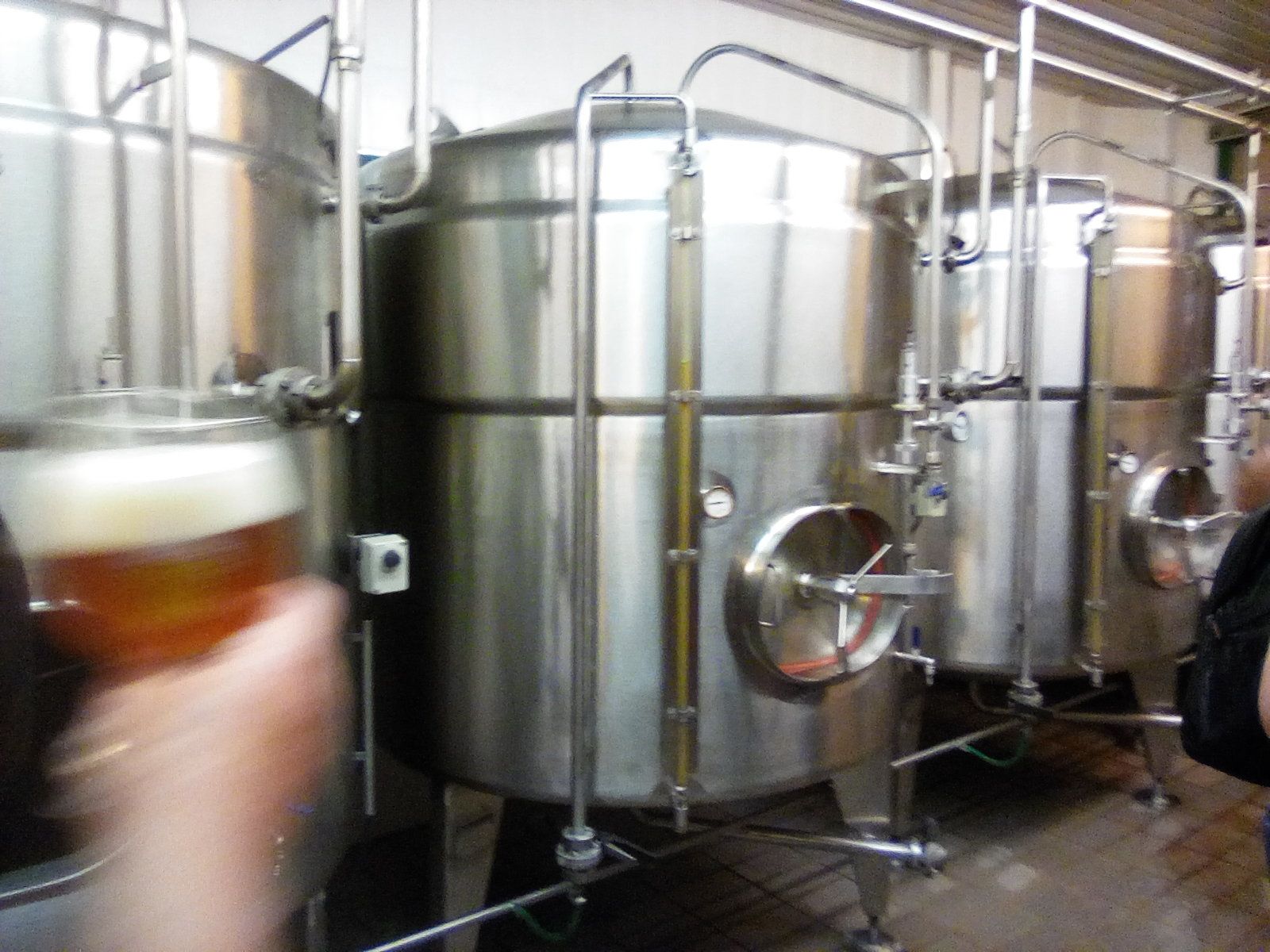
Buy enough beer and they'll show you the brewery. I assume that's what happened. Photo: JL Flanner
It’s promoted as “a brewery, pub, inn and (con)fusion restaurant”, and meets all the related criteria. The place, owned by the brothers Marko and Mile Kratochwill, has its own onsite brewery and very extensive and varied menu. We’re talking Slovenian classics alongside burgers, steaks, pastas, salads, seafood and pizzas, with the (con)fusion part of the billing being met by a list of Asian dishes that leans to Thai and Indian. A place with a seat and something for everyone, we enjoyed bottles of pilsner and porter to go with a plate of pad thai, plus – the photos prove, but I can’t remember – a number of other items.
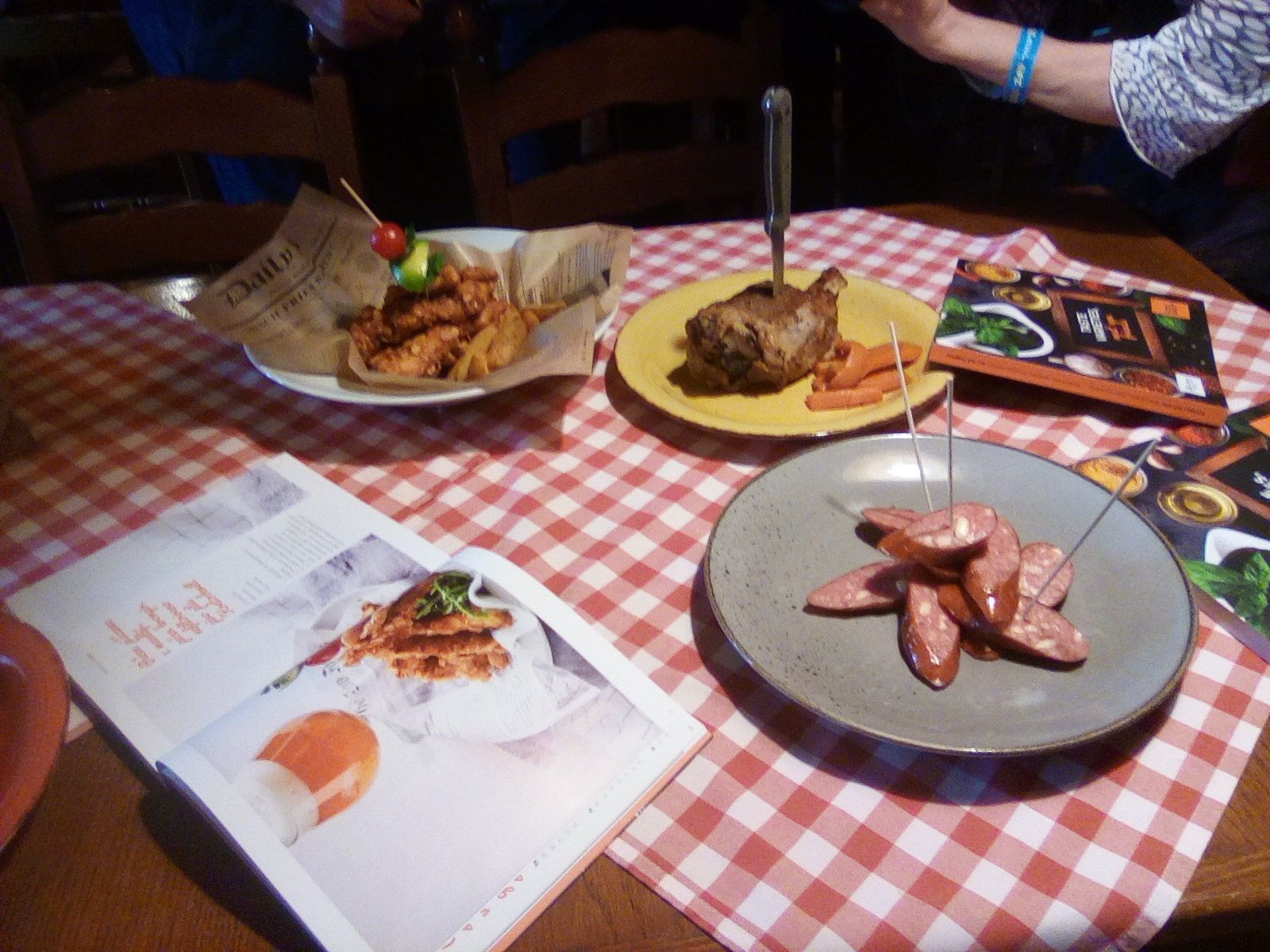
I have no memory of taking this picture. Photo: JL Flanner
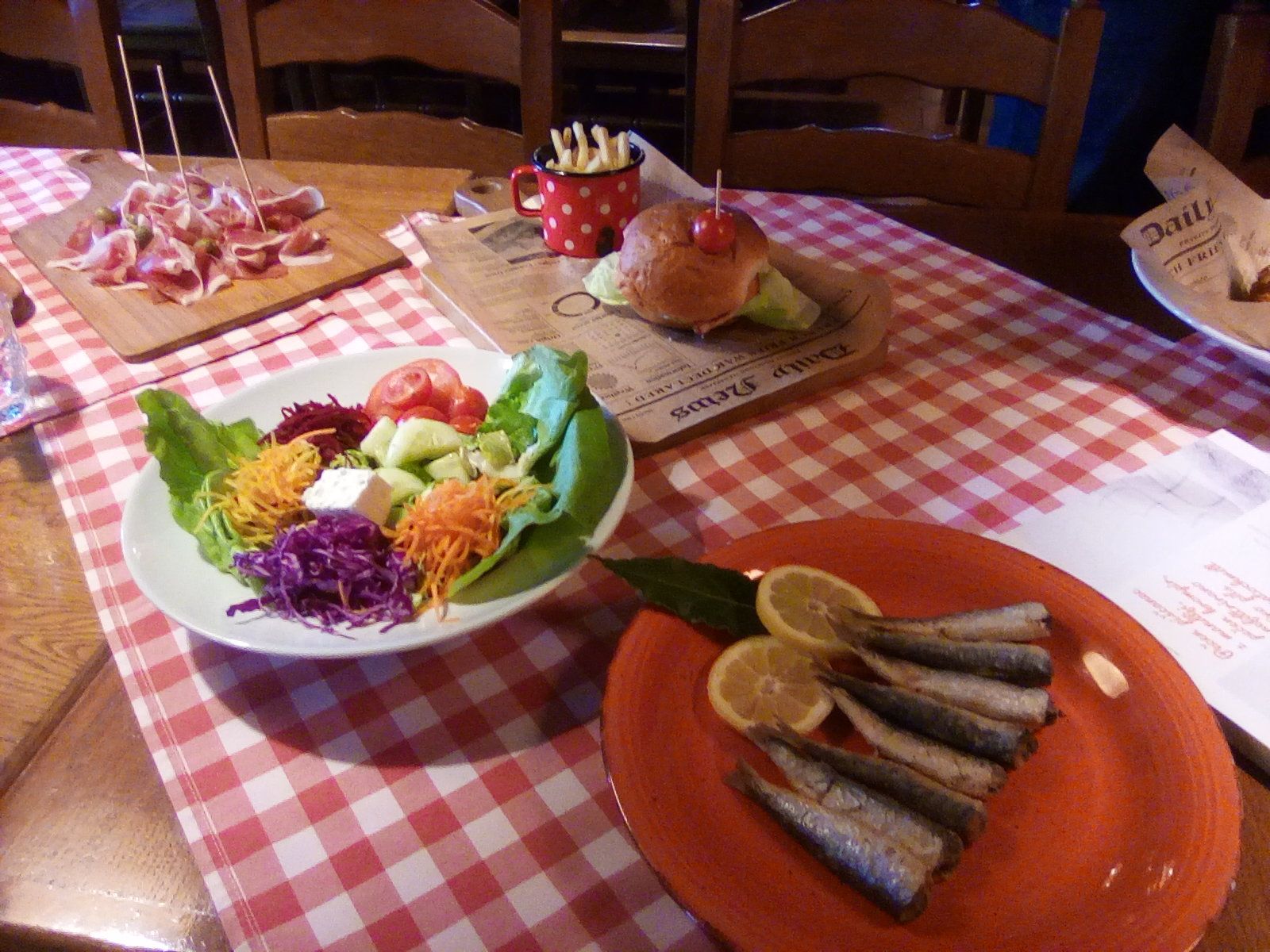
Or this one: Photo: JL Flanner
At around this point we decided we needed to avoid anywhere else that had its own brewery, or presented the opportunity for many more hours of research, and so headed back to where we started, Kristalna palača. While we began our culinary adventures in diVino, at the base of the tower, it was now time to head to the top of the tallest building in the country, although with just 20 floors and 89 metres you could be forgiven for thinking otherwise.
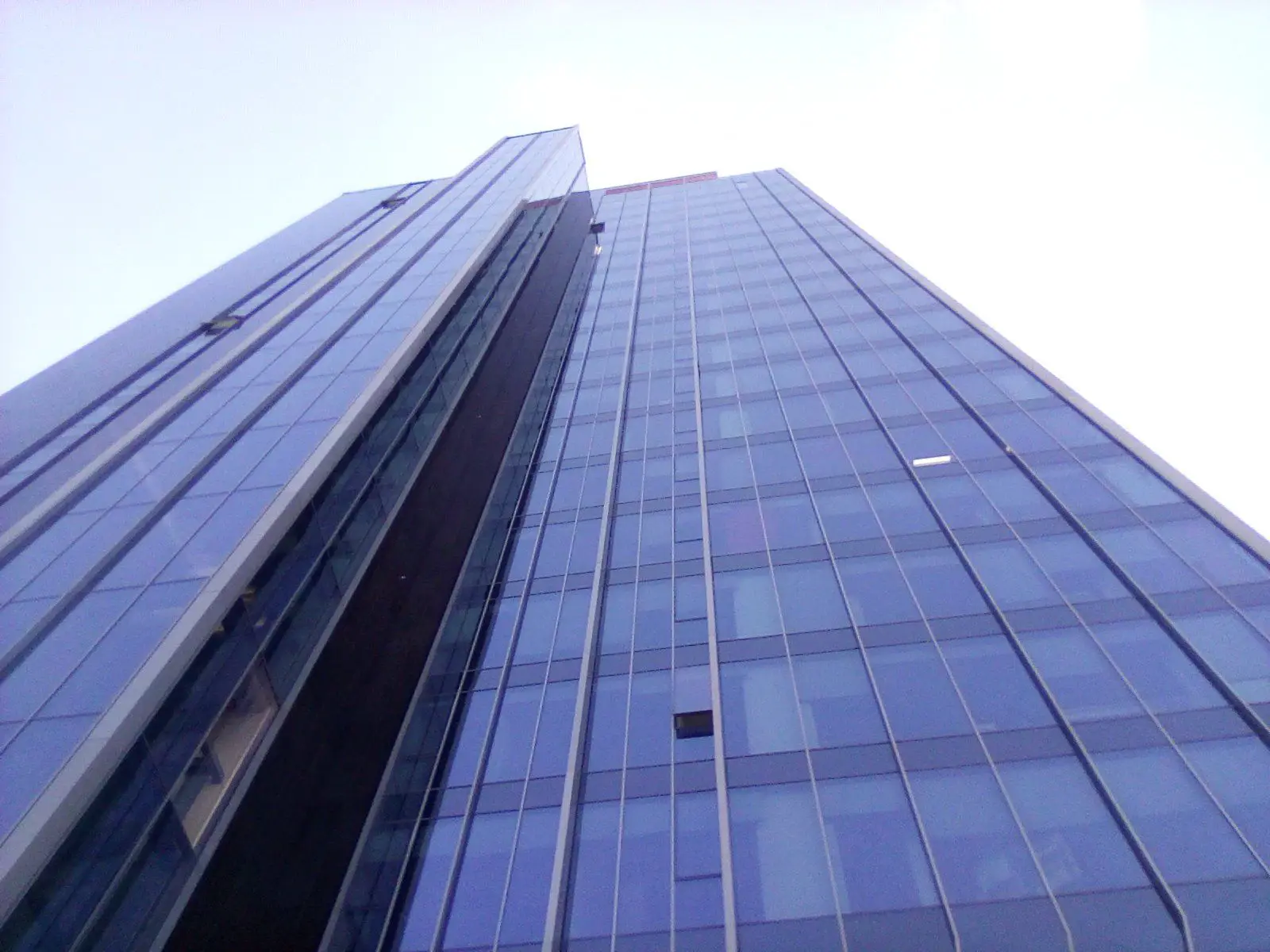
The tallest building in Slovenia. Photo: JL Flanner
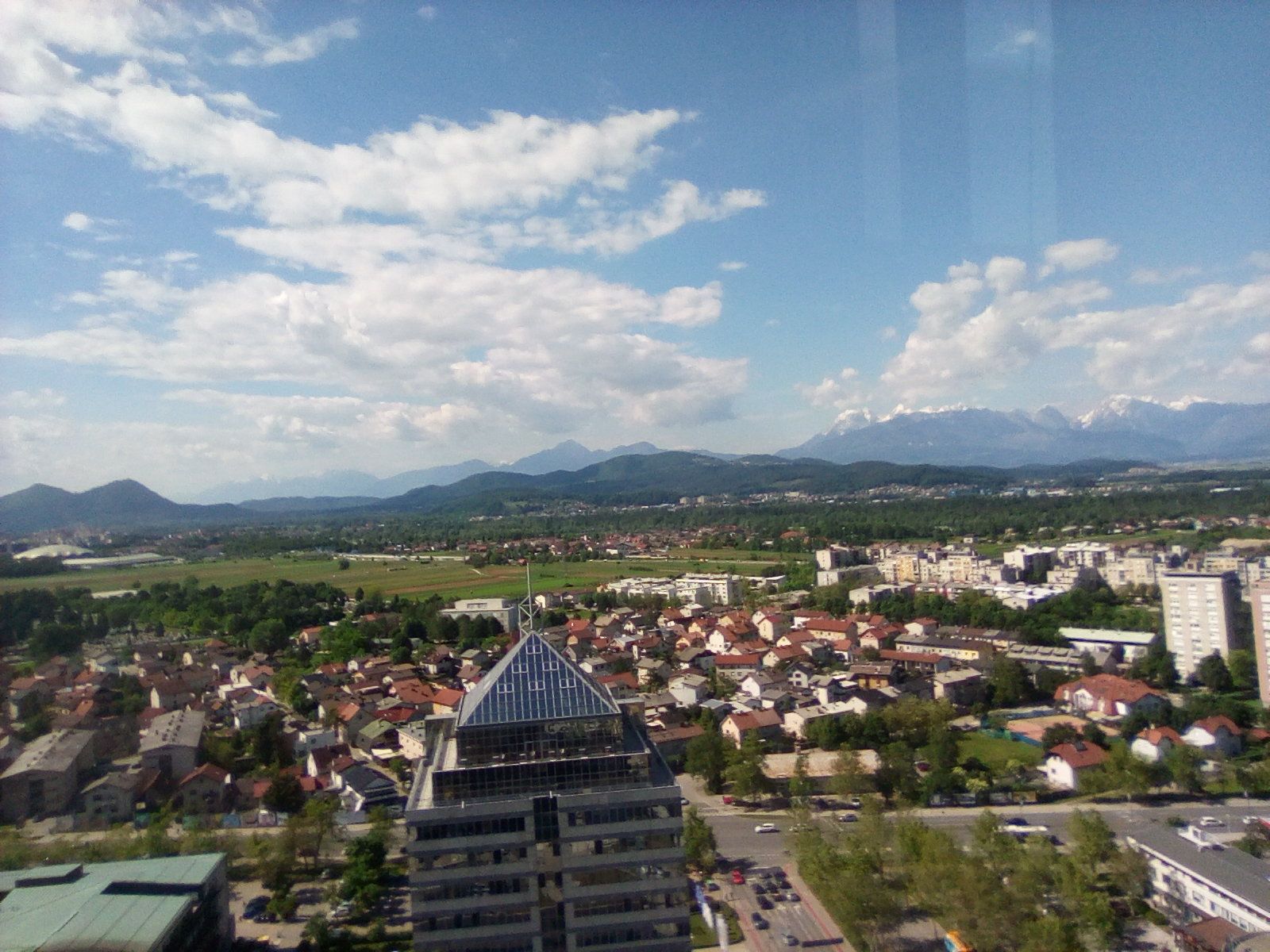
On a clear day you can see forever. Photo: JL Flanner
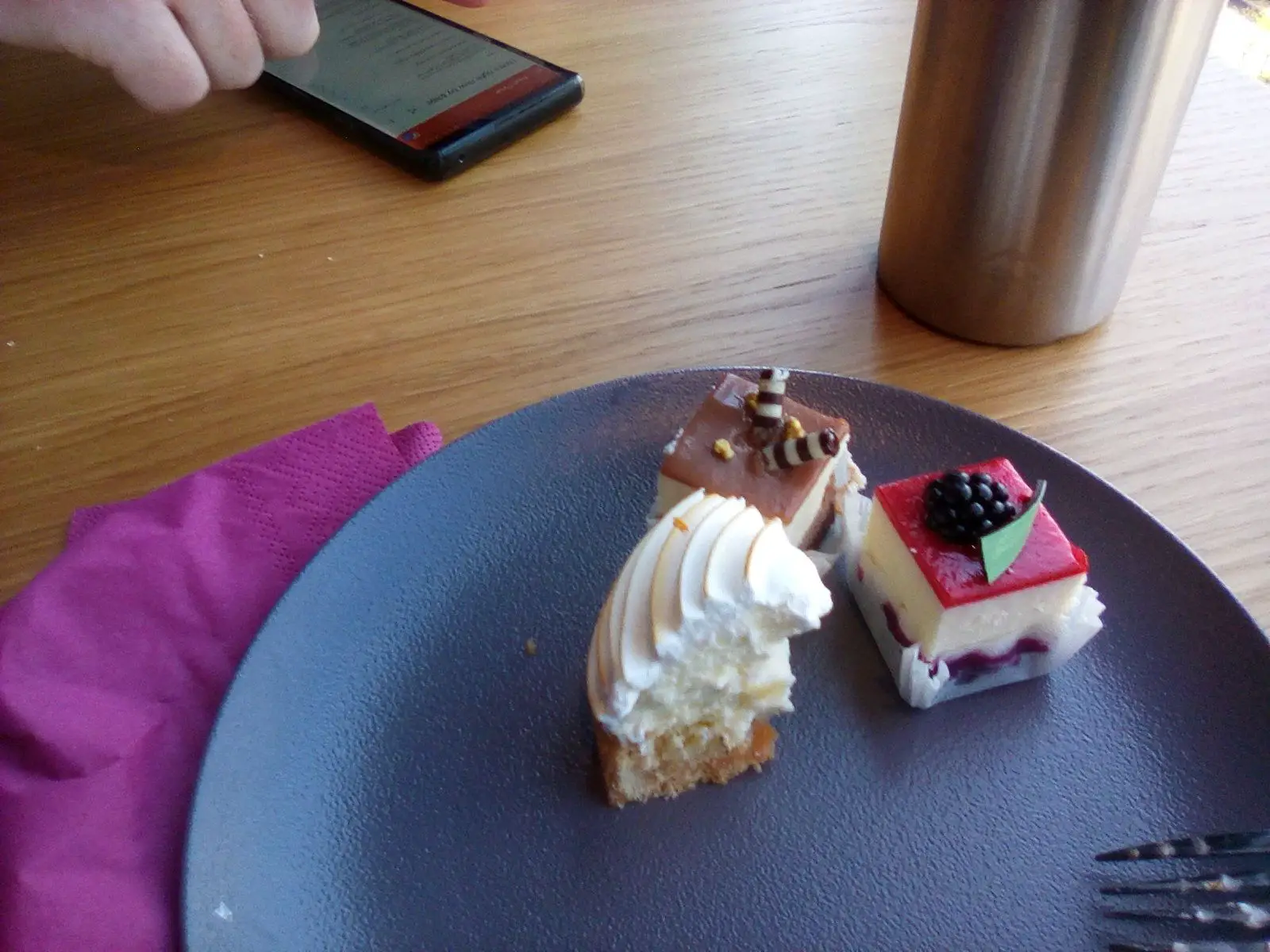
Small cakes to end a day of culinary adventure at BTC City. Photo: JL Flanner
While there are stairs, and an annual race up them (Tek a Kristalno palačo), we decided to take the elevator to Crystal Café and enjoy the view with a steady heartbeat. We were lucky with the weather, as it was clear and we could see the Castle and other city landmarks, as well as the mountains and just everything all around into the distance. We got coffee, shared a plate of small cakes and went over our notes for the day.
In short, even though we only managed to eat at four different places we got a good feel for the quality and variety, in terms of cuisine, price and dining style, currently available at BTC City, and with at least 70 other places to try on return visits, along with all the practical shopping and entertainment options on offer (a waterpark, cinemas, theatre and more), I’ll be going there whenever I have an excuse and an appetite.
STA, 6 June 2019 - Bathing water quality in 41 of 47 bathing waters included the European Commission's report for 2018, released on Thursday, were classified as being of excellent quality, with all 21 coastal bathing waters receiving this grade. Five waters were labelled good, one as sufficient and none as poor.
"All reported bathing waters are in line with the minimum quality standards of the directive on bathing waters and thus classified 'sufficient' or better," wrote the European Environment Agency, which examined 374 samples from 21 coastal and 26 inland locations.
The tested sites
With the exception of 2011 when one bathing site was classified as good, all coastal bathing waters in Slovenia have persistently been labelled as excellent since 2009.
The inland bathing waters have all also been receiving at least good or sufficient grades since 2010, with half persistently classified as excellent.
EU-wide, minimum quality requirements were met by 95.4% of the 21,831 bathing waters monitored last year, with 300 waters in Albania and Switzerland also included.
Cyprus, Greece, Latvia, Luxembourg, Malta and Romania were the only other countries besides Slovenia without a single poor quality case.
The full report on Slovenia can be read here, while an interactive map showing all the tested site, all over Europe, is here
The website Ex-Yu Aviation, essential reading for anyone with an interest in reginal air transport, reports that Slovenia is continuing in its efforts to attract nonstop flights to the Gulf, with a focus on te United Arab Emirates. The efforts include moves by the Ministry for Economic Development and Technology, as well as the Slovenian Tourist Board, which is funding marketing activities to promote direct links to Bahrain, Kuwait, Oman, Qatar, Saudi Arabia and the United Arab Emirates.
Related: Slovenia to Subsidize Marketing Efforts to Encourage New Ljubljana Flights
Related: Ljubljana Airport Continues to Seek Direct Flights to the Middle East
At present the closest direct link is the deal that the Emirates has established with GoOpti, the Slovenian shuttle bus company, which enables Emirates customers to use the carrier’s website to book tickets from Ljubljana to Zagreb Airport.
All out stories on air travel are here
STA, 1 June 2019 - June brings change to public transport as a universal integrated transport service kicks in on Saturday. A passenger, buying one pass, will be able to use all means of public transport available, notably bus, coach and railway services of all transport service providers.
For those commuting daily to Ljubljana from nearby towns, 35 to 40 new fast bus or coach services will be introduced, which means they will have only one stop in-between.
Monthly and annual passes will be available as of today, with the former costing the equivalent of 32 single passes and the latter the equivalent of eight monthly passes.
This is in line with the government's decision in April, when a decree on the new integrated system of public transport for passengers was adopted.
New single, daily and weekly passes will be introduced in August, to be followed up in 2020 with an integrated monthly pass at the price of only 26 single passes.
Prices depend on the length of the journey; the lowest one was set for a distance of up to 5 kilometres (EUR 1.3) and the highest for over 150 kilometres (EUR 13).
Transport providers taking part in the new scheme will have an option of offering up to a 30% discount for monthly and annual passes.
The government decreed a 20% discount as the lowest possible for annual passes, as its goal is to have more than 80% of all passengers opt for annual or monthly passes.
The set prices are generally the prices of coach services, although transport officials have expected lower prices to encourage the use of public transport.
Although rail and bus fares should cost the same under the decree, business daily Finance recently reported rail operator Slovenske Železnice (SŽ) did not plan a price rise.
Commenting on the new system for Finance, Robert Sever of the GZS's transport section said last month: "We don't expect a revolution, but the fast lines will attract somewhat more passengers. However, passengers from Postojna will still get stuck in traffic jams on the motorway just like those in cars."
The expansion of the integrated passenger transport service comes after secondary school and university students started testing it in the 2016/17 academic year.
Finance has reported some EUR 120 million is available for public transport services a year, of which SŽ and 25 coach companies as the providers of the public service of integrated passenger transport received almost EUR 44 million for subsidised student passes in 2018.


